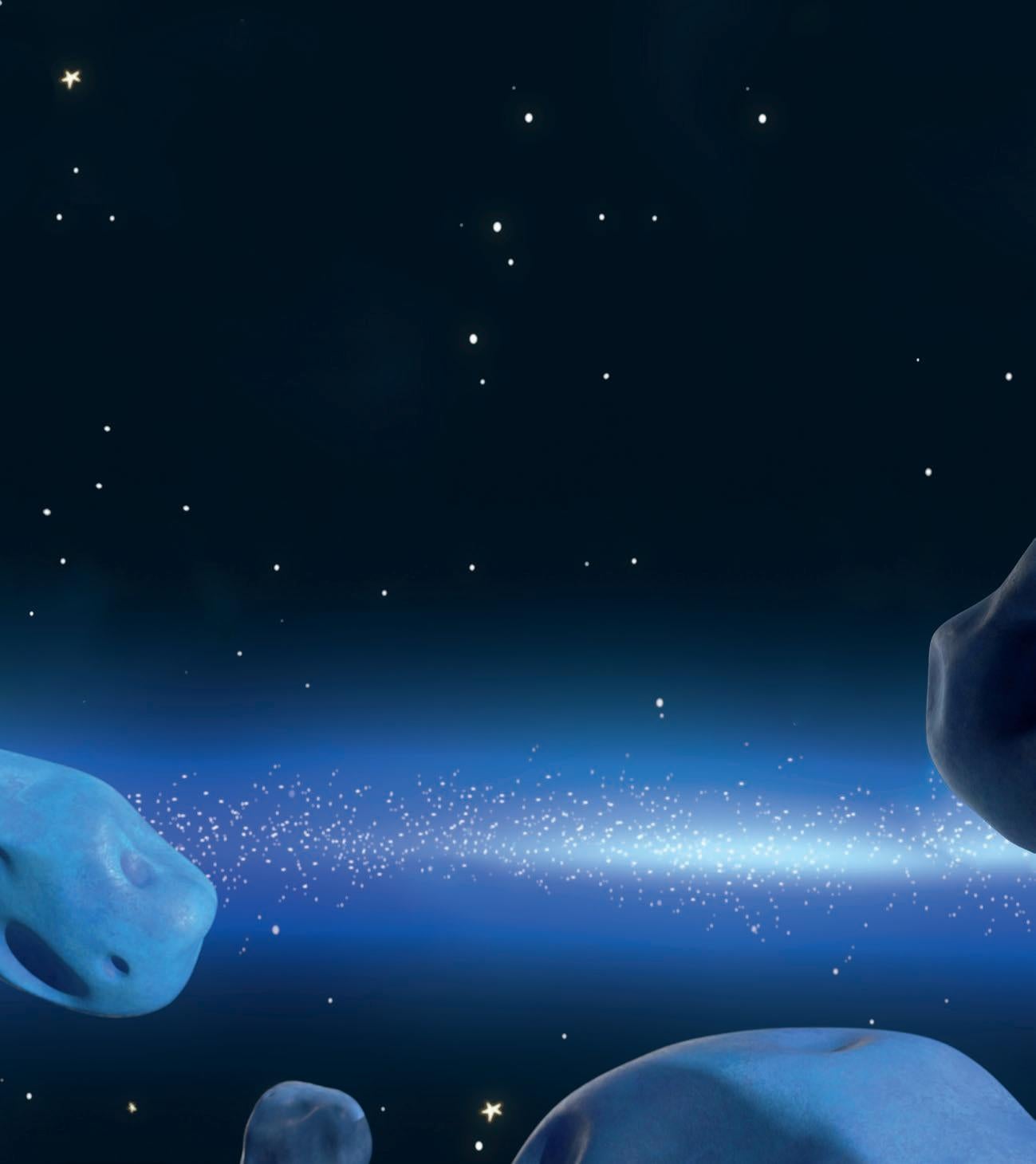












































The fine art of video game adaptations
Fashion-first TV for kids is trending

Lifestyle CP opens up new fandom opps
Cartoons stage an influencer takeover
 engaging the global children’s entertainment industry
engaging the global children’s entertainment industry

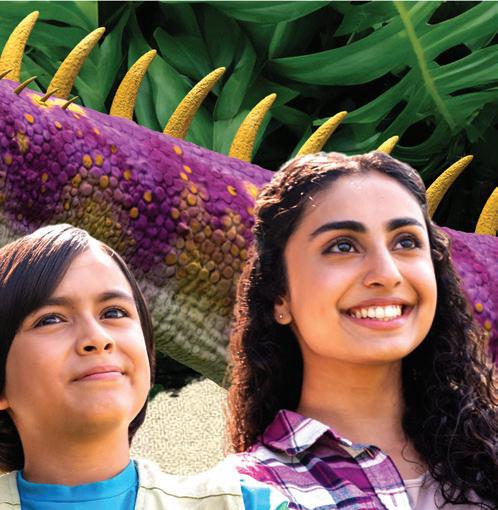

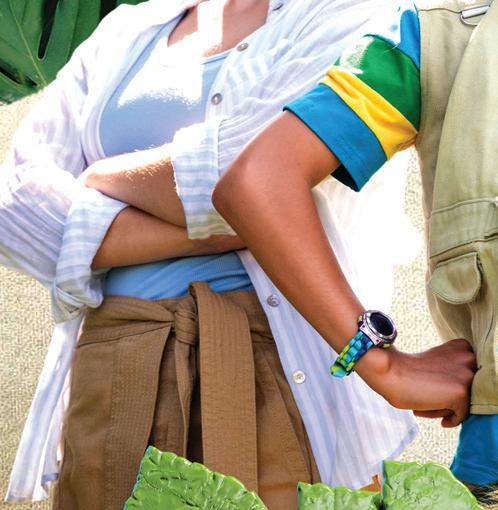


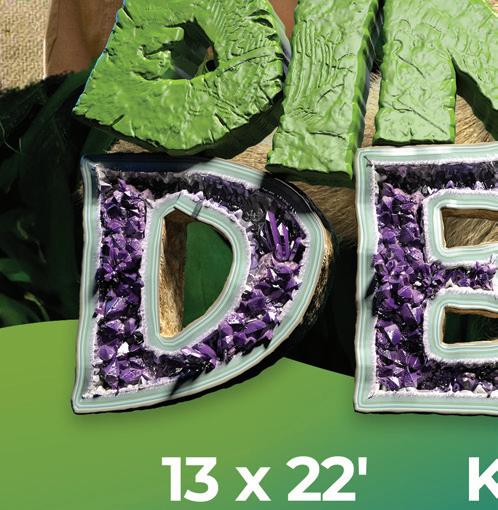





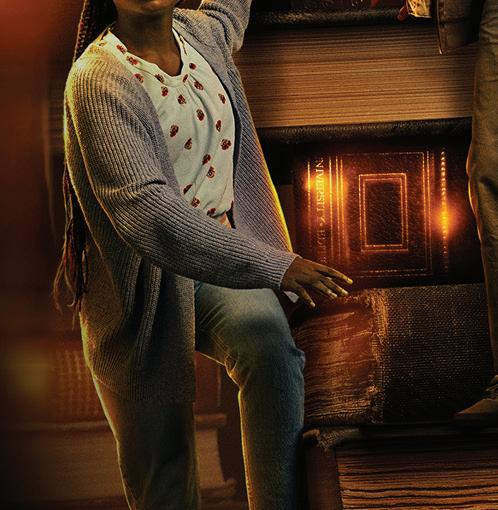
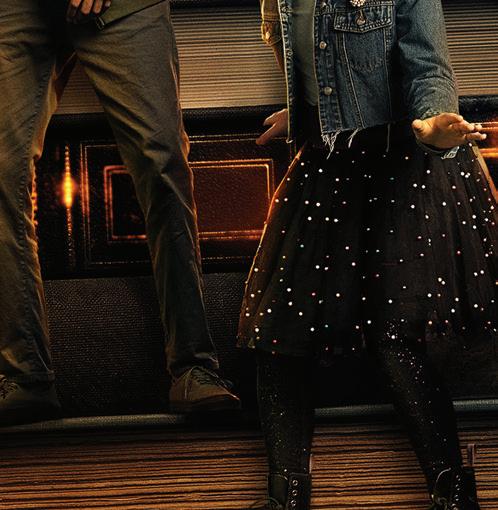






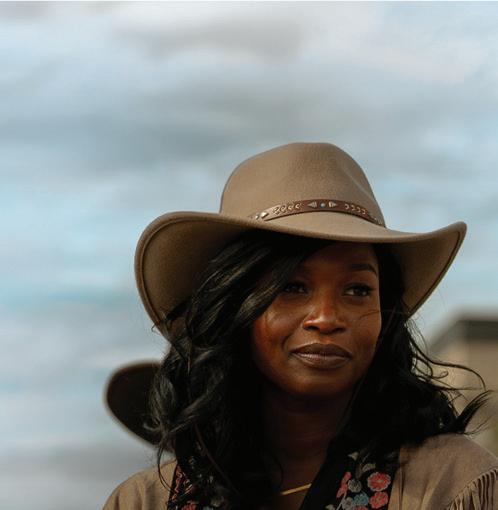
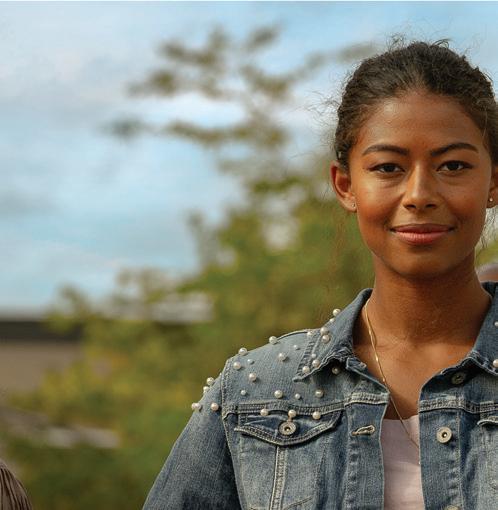




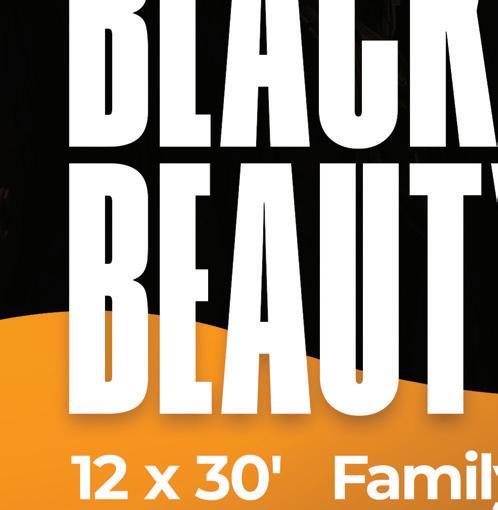


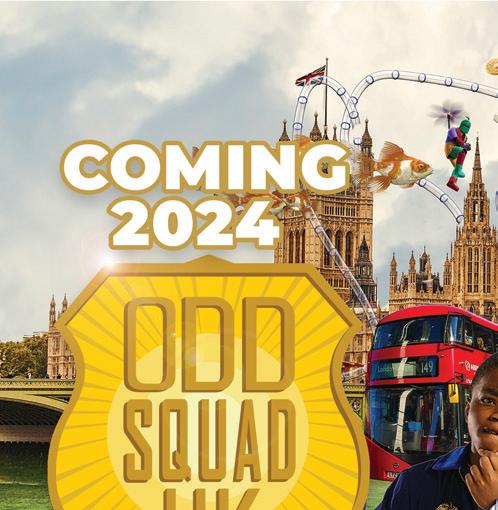



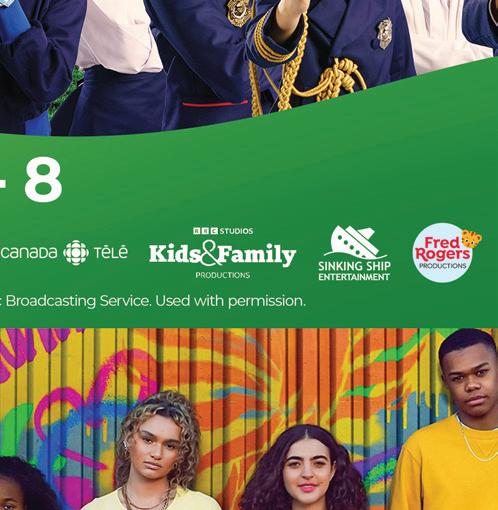

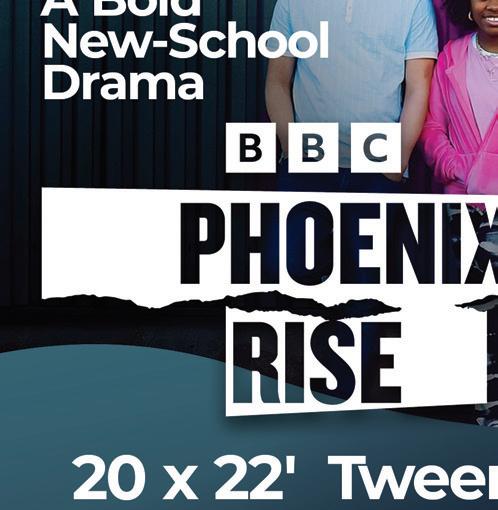
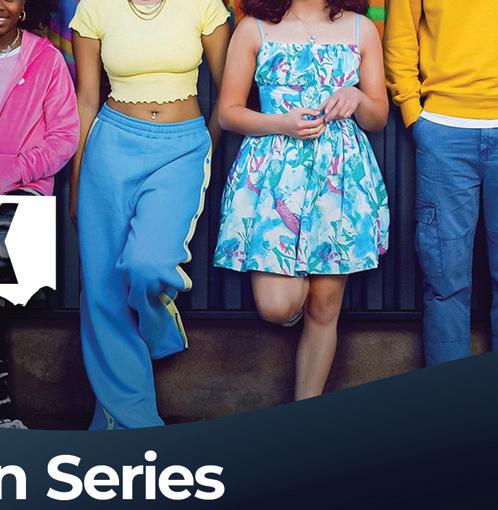















































































































































































































































































































































































October/November 2023
How cutting-edge tech The Volume transformed a Toronto studio into a glam K-pop school.
Monster Entertainment and Acamar Films are maximizing content sales in some unlikely spaces.
From the classic Tamagotchi to Spin Master’s new Bitzee, e-pets are back in the toy aisles.
Kids IPs are gamifying learning— and the market is poised for major growth.
Kidcos are leveraging social media to turn their animated characters into influencers.
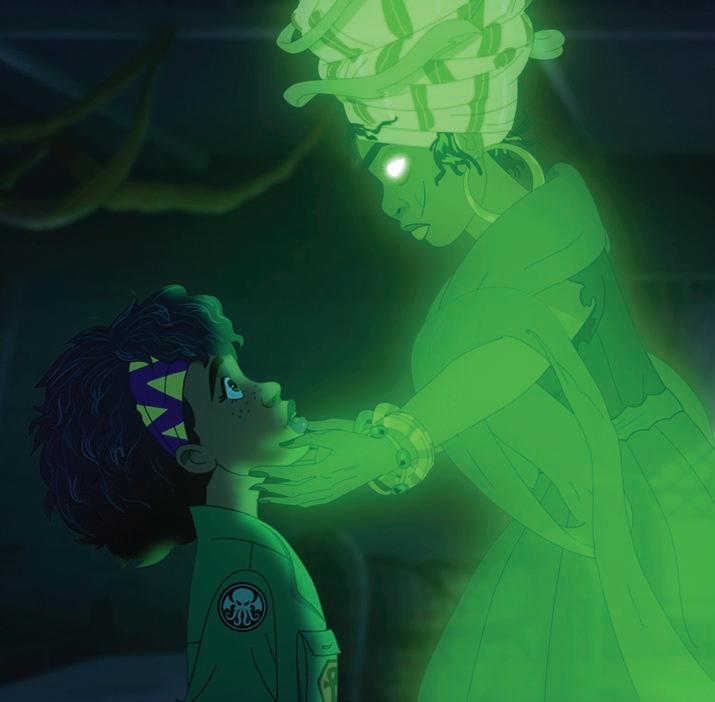
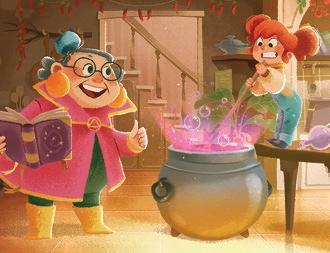






all learn at our own pace. Often, the best way to approach something new is meticulous research, followed by careful planning and preparation, and finally executing a well-thought-out strategy. But then sometimes, you just have to jump in feet first and hope for the best.
I recently attended this year’s Cartoon Forum in Toulouse, France, where I was welcomed by many friendly faces—more than a few of whom called the event my “trial by fire” in the kids market. I’m not sure it was as dramatic as that, but it was certainly a thrilling, fulfilling experience.
The three-day animation industry gathering was a whirlwind of enthusiastic pitching, networking and croissant-munching. (Although I had been told to expect delicious cuisine, I was still somehow unprepared for the culinary delights offered on a constant basis.) The pitches themselves were the biggest treat, though. There are so many exciting projects in the works, from gentle preschool series to raucous comedies aimed at preteens.
Most of all, I left Cartoon Forum feeling blessed to be a part of such a warm, passionate industry. And I look forward to meeting many more of you at MIPCOM this month— and learning about other hot new content and trends on the horizon.
Speaking of horizons, in this issue of Kidscreen, Evan Baily concludes his “Eye on AI” series with an experiment to test the capabilities (and limitations) of Runway AI
for generating film. Cole Watson looks at an emerging trend in location-based entertainment: themed walking trails (where you can touch grass and Gruffalos). And Ryan Tuchow explores the rise of “virtual influencers”— animated characters that function like social media stars.
Tuchow offers another bit of tech insight with his piece on motion capture in the animation industry. Studios like Henson and Blue Zoo are finding new ways to leverage mocap to improve efficiency and decrease post-production time.
But the main focus of this issue is our video game adaptation coverage. Not too long ago, the “video game adaptation” was a concept that felt like a missed opportunity. We all probably remember films based on popular game IPs that flopped (Super Mario Bros., Street Fighter, Max Payne…the list goes on). Yet, Universal’s The Super Mario Bros. Movie was a major hit this year, generating an impressive US$1.36 billion at the global box office. And Netflix’s Arcane adaptation made history last year by becoming the first streaming series to win an Emmy for Outstanding Animated Program.
With many other video game adaptations in the pipeline, it feels like the tables have turned…so what has changed? How did the “cursed” video game adaptation become an appealing bet for producers and creators? And what does this mean for the industry’s future?
These questions (and more) are answered in this issue’s three-part special feature. Jeremy Dickson investigates various factors “at play” that make now the perfect time for projects based on video games, while Sadhana Bharanidharan explores creative craft in the game-to-screen pipeline process. And Cole Watson looks at the consumer products angle, offering insight on turning games into toy lines.
Finally, this is our October/November issue, so we had to include a little horror in time for Halloween! Andrea Hernandez investigates the trend of spooky shows for kids.
And on that note: This is the MIPCOM issue. If you’re in Cannes reading this, come and find me. I’d love to chat about whatever you’re working on.
—Sarah Milner
SVP & PUBLISHER
Jocelyn Christie jchristie@brunico.com
EDITORIAL EDITOR
Sarah Milner smilner@brunico.com
ASSOCIATE EDITOR Janet Lees jlees@brunico.com
FEATURES & SPECIAL PROJECTS EDITOR
Jeremy Dickson jdickson@brunico.com
NEWS EDITOR
Ryan Tuchow rtuchow@brunico.com
STAFF WRITERS
Sadhana Bharanidharan sbharanidharan@brunico.com
Andrea Hernandez ahernandez@brunico.com Cole Watson cwatson@brunico.com
CONTRIBUTORS
Evan Baily, Céline Carenco, Gary Rusak
BUSINESS DEVELOPMENT & ADVERTISING SALES (416) 408-2300 or 1-800-KID-4512
ASSOCIATE PUBLISHER Maggie Wilkins-Hobbs mwilkins@brunico.com
ACCOUNT MANAGER
Lia Minquini lminquini@brunico.com
CREATIVE
CREATIVE MANAGER & ART DIRECTOR
Taylee Buttigieg tbuttigieg@brunico.com
AUDIENCE SERVICES
DATA INTEGRITY & CUSTOMER SUPPORT SUPERVISOR Christine McNalley kidscreencustomercare@brunico.com
CORPORATE PRESIDENT & CEO Russell Goldstein rgoldstein@brunico.com
EVP, CANADIAN MEDIA BRANDS & EDITORIAL DIRECTOR Mary Maddever mmaddever@brunico.com
SVP & EXECUTIVE DIRECTOR, NATPE GLOBAL Claire Macdonald cmacdonald@brunico.com

SUBSCRIPTIONS To order, visit www.kidscreen.com/subscribe. To make a change to an existing subscription, please contact us by email (support.kidscreen.com). Fax: 416.408.0249 Tel: 416.408.2448. Kidscreen is published five times per year by Brunico Communications Ltd. Subscription rates in the US are US$89 for one year and US$159 for two years, and single copies are US$7.95. Please allow four weeks for new subscriptions and address changes.
REPUBLISHING & SUBMISSIONS Nothing in Kidscreen may be reproduced in whole or in part without the written permission of the Publisher. All letters sent to Kidscreen or its editorial team are assumed to be intended for publication.Kidscreen invites editorial comment, but accepts no responsibility for its loss, damage or destruction, howsoever arising, while in its office or in transit. All material to be returned must be accompanied by a stamped, self-addressed envelope.
POSTMASTER NOTIFICATION US Postmaster: Send address changes to Kidscreen, PO Box 1103, Niagara Falls, NY, 14304. Canadian
Postmaster: Send undeliverables and address changes to Kidscreen, 8799 Highway 89, Alliston, ON, L9R 1V1. Canada Post Publication Agreement number 40050265 (printed in Canada) ISSN number 1205-7746 - ©Brunico Communications Ltd. (2023) Kidscreen® is a registered trademark of Brunico Communications Ltd.
February/March

YouTube came under fire at the end of August, when media watchdogs Fairplay and Adalytics alleged the company’s advertising practices allowed for personalized ads to reach kids—again. Dan Taylor, Google’s VP of global ads, responded by saying YouTube did not serve any personalized ads on content made for kids. The whole story is reminiscent of what happened in 2019, when YouTube paid a US$170-million fine to settle allegations that it had illegally collected personal info from kids without parental consent. To avoid future charges, the platform stopped running ads on content that was made for kids. These new claims are coming to light as companies try to figure out how to reach kids on the mega-popular platform at a time when it’s never been more crowded. The solution from pocket.watch—one of the few companies that has the rights to sell COPPA-compliant ads on YouTube and YouTube Kids—was to strike a deal with Mattel to sell ad inventory on the toyco’s 90-plus channels. Only time will tell if the new complaints about YouTube advertising to kids will trigger more changes on the platform, or if things will stay the same.

10
In response to overwhelming global demand, LEGO recently made its Braille Bricks available to purchase at retail for the first time. The set includes 287 bricks with letters, numbers and symbols in braille and ink. LEGO Foundation first began distributing the kits for free to orgs working with blind children in 2020.
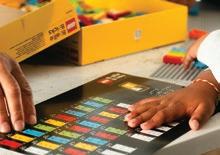
France’s animation sales dropped in 2022, and the latest forecasts in the UK point to a decline in TV production this year. But the good news is that kids content remains popular in both countries, and this could help to improve the overall picture in the coming years.

things on our radar this month
The writers strike is over after almost five months. The WGA and AMPTP signed a new deal on September 27, and now the industry can start getting back to business. Studios will be busy tapping scribes for new projects and filling pipelines with scripts. What’s more, the agreement offers limits on AI and better residuals, which could set a precedent for studio-talent relationships going forward.
Theaters have turned to an unlikely savior to fill their “blank space”—Taylor Swift. The popstar signed directly with AMC Theatres to distribute her concert film Taylor Swift: The Eras Tour, resulting in a record-breaking US$26 million in one-day presales. This could lead to more direct deals for concert flicks as a lucrative option for theaters and artists with teen-centric fanbases.
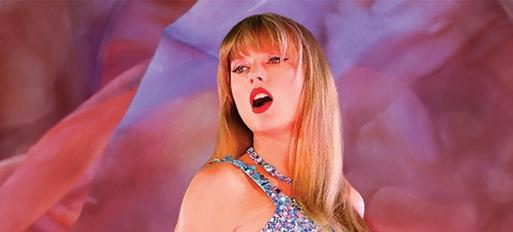
In its latest effort to score points in the kids market, the NFL partnered with ESPN and Disney for an alternate telecast of an October 1 Falcons vs. Jaguars match, set in the world of Pixar’s Toy Story franchise. Every element was animated in real time for this feed, allowing the game to tap into the appeal of a classic toon without sacrificing any event excitement.

More major kids brands have been active in the podcast space this month. Disney is set to launch the first fictional Frozen podcast in October, while Nickelodeon is bringing ’90s series Are You Afraid of the Dark? to a new audio audience. And Dr. Seuss Enterprises is jumping into the market in a deal with Amazon’s podcast studio Wondery.

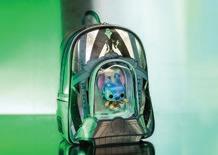

In a creative bit of theater/streaming synergy designed to hook kid viewers, Nickelodeon is showing Dora and the Fantastical Creatures ahead of PAW Patrol: The Mighty Movie in theaters. This new Dora short ties into the IP’s upcoming CG relaunch on Paramount+ in the spring.

Collectibles giant Funko is regrouping after two rounds of layoffs, the disposal of US$30 million in excess inventory and the resignation of former CEO Brian Mariotti. The toyco’s remaining leadership is now focused on taking the company (and its product lines) back to its roots.
Netflix has struck gold with its live-action adaptation of pirate anime series One Piece, which racked up 37.8 million views in just two weeks after its August launch. The show has also cracked the streamer’s Top 10 list in more than 93 countries and is already greenlit for a second season.

Kidscreen checks in with new, established and evolving kids content buyers to find out what they’re looking for right now. For more of this type of intel, check out our Global Pitch Guide at kidscreen.com.
BY: ANDREA HERNANDEZarner Bros. Discovery Latin America (WBDLA) has embarked on a new programming strategy that involves buying more domestic content for its linear channels and exporting it to HBO’s Max streaming service to reach new audiences.

WBDLA is focusing on its own region as a content source because homegrown shows are increasingly ready to migrate to international platforms, says Pablo Zuccarino, chief content officer and general manager of kids programming. In countries such as Brazil, Argentina and Mexico, in particular, there has been an explosion in the kind of sophisticated storytelling for kids audiences that can be sustained over time, he adds.
For example, last April, the broadcaster started airing Cuquin (20 x five minutes) from Mexico’s Ánima Estudios on Cartoonito, where Zuccarino says it quickly became one of the preschool channel’s top-10 most-watched shows. And WBDLA recently renewed several local shows it had previously acquired for its Discovery Kids channel, including Argentinian studio Mundoloco CGI’s Mini Beat Power Rockers (260 x five minutes) and O Show da Luna! (182 x seven minutes) from TV PinGuim in Brazil.
WBDLA also exported Mexico-based A.I. Animation Studios’ Villainous (six x 15 minutes) to Max last May, and Zuccarino says the plan is to put more LatAm content on a path to the streamer. But it’s not just about domestic programming: WBDLA has also been focusing on expanding its preschool offering with Warner Bros. Animation shows that premiered first in the US, such as Bugs Bunny Builders and Batwheels

“We have very valuable brands, and for us, it’s a mission to make sure they remain relevant to younger kids,” says Zuccarino. “For many three- to five-year-olds, it’s the first time they have interacted with these characters.”

The broadcaster is currently seeking preschool content for Cartoonito that entertains and teaches emotional intelligence, says Zuccarino. And for Discovery Kids (which targets viewers ages four to eight) and Cartoon Network (eight and up), WBDLA is looking for shows with more grown-up stories and themes. Kids in these core age groups are regularly watching content intended for older viewers, including series that delve into relationships and explain how the world works, says Zuccarino.
WBDLA is particularly interested in animated series for six- to 10-year-olds, and is open to live action for all ages, but educational content is not on the team’s shopping list. There are no defined limits on episode length, as long as “the production’s storytelling can create a connection with the audience,” says Zuccarino.
Season two of Brazilian studio Mr. Plot’s Imagine-se (10 x seven minutes), featuring a musical man with an orange mustache, will join Cartoonito’s lineup in Q4 2023. And Rey Mysterio vs. La Oscuridad (10 x seven minutes) from ¡Viva Calavera! in Mexico is set to launch on Cartoon Network in the same quarter, featuring a wrestling fan fighting supernatural baddies. New eps of Warner Bros. Animation’s Batwheels (80 x 11 minutes) and Zodiak Kids & Family’s Shasha & Milo (25 x 22 minutes) are also on the coming-soon lists for Cartoonito and Discovery Kids, respectively.
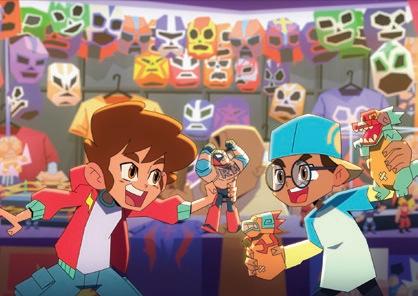 tk Consequatus dolore, omnis aliquisquunt utem. Nam reptatento ipiti occusdam rest, opta estrum sit endempos qui reprehendem.
Mexican series Cuquin has become one of WBDLA’s top-10 most-watched shows since its addition last April
Pablo Zuccarino, chief content officer and general manager of kids programming for Warner Bros. Discovery Latin America
Rey Mysterio vs. La Oscuridad, from Mexico-based ¡Viva Calavera!, will premiere on Cartoon Network later this year
WBDLA plans to put more homegrown shows like Villainous on its parent company’s Max streamer
tk Consequatus dolore, omnis aliquisquunt utem. Nam reptatento ipiti occusdam rest, opta estrum sit endempos qui reprehendem.
Mexican series Cuquin has become one of WBDLA’s top-10 most-watched shows since its addition last April
Pablo Zuccarino, chief content officer and general manager of kids programming for Warner Bros. Discovery Latin America
Rey Mysterio vs. La Oscuridad, from Mexico-based ¡Viva Calavera!, will premiere on Cartoon Network later this year
WBDLA plans to put more homegrown shows like Villainous on its parent company’s Max streamer

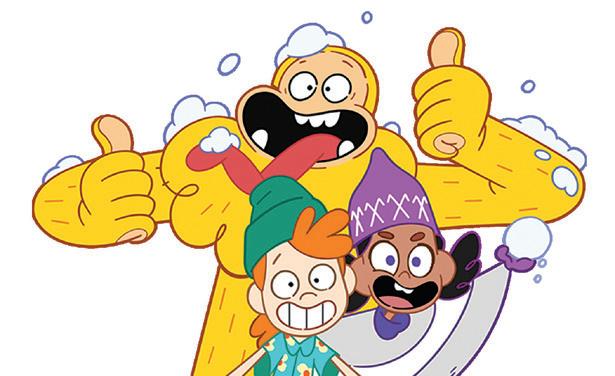

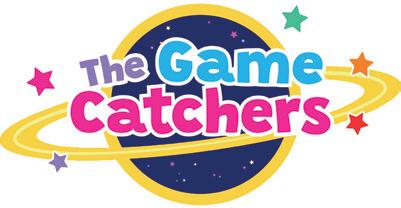

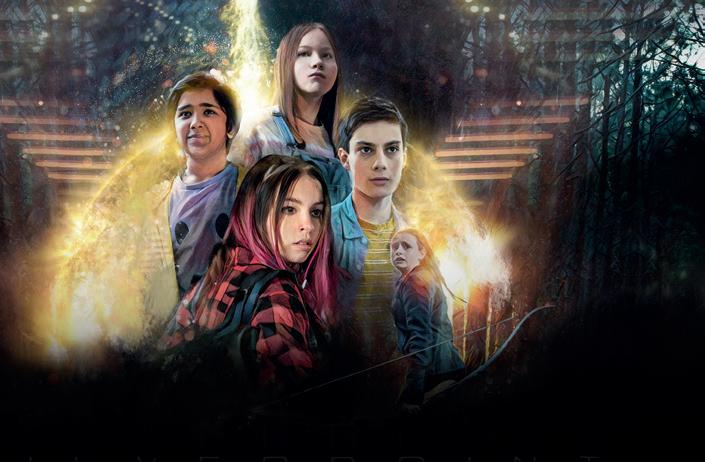
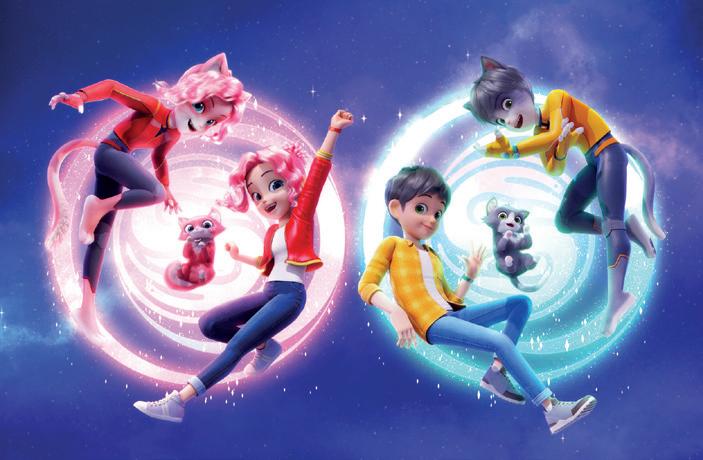


How a ground-breaking technology is helping Pillango Productions and Aircraft Pictures tell a personal story set in the exciting world of K-pop.
BY: SADHANA BHARANIDHARANhe camera begins rolling. A group of young actors sequence through a sharp dance routine on a massive stage. Behind them is a long runway, glowing under dozens of neon purple lights. Both spacious and glamorous, it looks like a practical set to the cast and crew, but it’s all just an illusion—and not the green-screen kind. It’s a new cuttingedge technology, known as The Volume, that has been revolutionizing Hollywood productions in recent years.
Kidscreen recently spent an energetic day on the set of upcoming series Gangnam Project (working title), created by well-known kids producer Sarah Haasz. Her banner, Pillango Productions, co-produces the 10 x 30-minute series for kids ages eight to 14 with Aircraft Pictures in Toronto. Pillango
developed the concept with CBC Kids (Canada), and CBBC (UK) came on board last year as a co-commissioner.
Gangnam Project is one of the first kids shows to use The Volume; actors film in front of a giant LED wall with a realistic, interactive background that moves in tandem with the camera. The virtual production process first came to prominence in 2019, when VFX company Industrial Light & Magic developed it for Disney+ series The Mandalorian. Since then, it has been used on an increasing number of productions, including Thor: Love and Thunder and The Batman
Gangnam Project centers around Hannah, a Korean-Canadian teen who travels to South Korea to teach English and connect with her heritage. When she unexpectedly winds up in
a K-pop school, she’s swept into a world she has so far only admired from afar.
The coming-of-age series has been in development for around six years. It started out as a story focused on a young girl who reflected Haasz’s experiences growing up as a first-generation Korean-born immigrant. “The challenge was finding a vessel that would pique the interest of the target age group,” she says. “And that’s how K-pop came into the story.”
Haasz is showrunning with Romeo Candido—the pair previously served as co-showrunners on teen drama The Next Step. As a Filipino-Canadian, he’s had similar experiences in navigating cultural identity, which Haasz says made him an ideal fit.
Korean music has been at the center of a global boom in recent years, and K-pop delivered eight of the top-10 best-selling albums worldwide last year (with dedicated teen fans driving the lion’s share of sales and streams), according to a 2023 report from the International Federation of the Phonographic Industry.
Bringing a K-pop school into the show’s storyline not only captures this cultural zeitgeist, it also provides a fun playground for
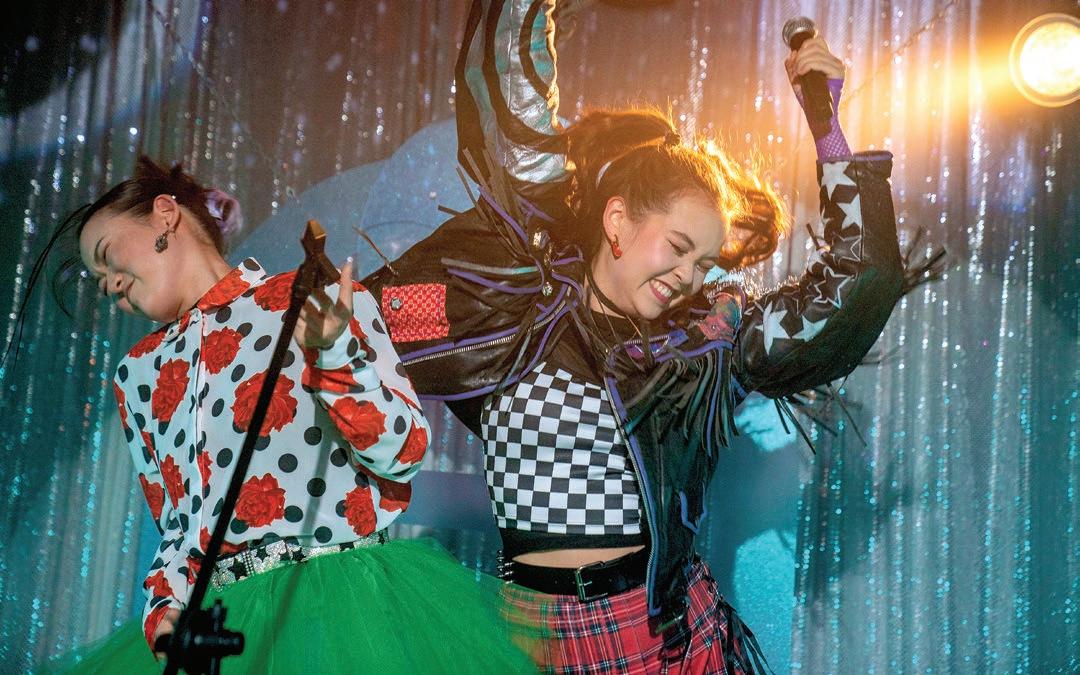

writers to tap into all the elements of classic teen TV. “There’s friendship, family, dreams, aspirations, acceptance,” says Haasz. “And forbidden love, of course!,” adds Aircraft co-president Anthony Leo.


























It’s a reference to the real-life rule that restricts K-pop trainees from dating—one of the many things Haasz learned in her extensive research of the industry, which included consulting a friend who was a former K-pop star and visiting actual K-pop schools in South Korea.



Mohawk College, in the Canadian city of Hamilton, served as the primary filming location for Gangnam Project. Its campus will be featured on screen as One Mile Entertainment, the K-pop school that Hannah attends. It’s an aspirational setting, where the choreography is as slick as the outfits are glam—satisfying the audience’s appetite for escapism, Leo says.
To go the extra mile, August Rigo (who has penned songs for Korean supergroup BTS) was recruited to compose the soundtrack. Casting was equally rigorous—criteria stipulated a half-Korean actor for the lead, and an ensemble of triple threats who could also sing and dance like K-pop idols, Haasz recalls.
Leo came up with the idea to use the Volume facility, with access provided in a partnership between Toronto-based Dark Slope Studios and The Immersion Room. He says the ability to film using the facility’s backgrounds and technology was a “gamechanger,” as it not only helped achieve certain shots of Korea, but also elevated the
ambitious music sequences to match the versatility of a real-life K-pop video.

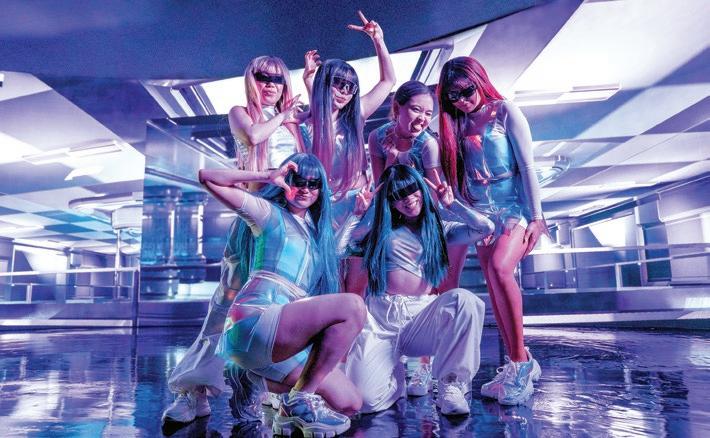
“It became part of the process of writing the scripts, knowing that we had access to this tech,” says Leo.





The background looks just like a physical set on screen, but saves the time and effort of traveling or building sets from scratch. And the most surprising advantage is how much it helps actors when they can actually see what they’re engaging with, compared to performing against a green screen, says Haasz.

Marie McCann, senior director of children’s content at CBC Kids, says the series stands out with its fish-out-of-water premise—intertwining a deep story about immigrant identity with the fun setting of the K-pop world. “It’s






completely on the pulse of pop culture and what kids are interested in,” she says.



For one thing, having a K-pop enthusiast as a protagonist is likely to score some major relatability points among young fans of the genre. But the series also offers a strong dose of sincerity and optimism, which have been missing in this demo’s TV landscape, notes McCann. “We’re really trying to come up with shows that are an antidote to the much more mature and sometimes cynical shows that young tweens are watching.”



Filming in Canada (along with a few scenes shot in South Korea) wrapped in September. Gangnam Project is slated for a spring 2024 launch, with Federation Kids & Family handling global distribution.




















































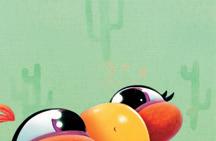



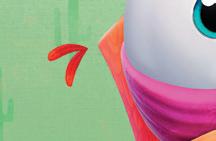
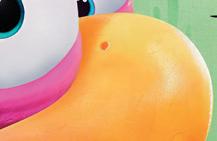


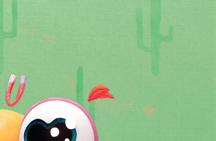
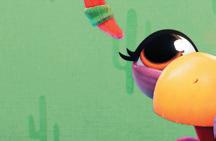




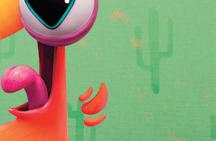









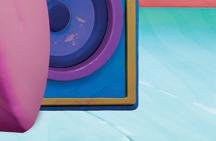


































LFD Productions’ award-winning series Goombay Kids is going international.
BY: RYAN TUCHOW
ahamian prodco LFD Productions is aiming to turn its homegrown children’s hit Goombay Kids into an international success.
The 26 x 22-minute series for the five to nine set centers around three kids who go on adventures to learn about the Bahamas. In later seasons, their educational outings turn into fantastical adventures that see them cross paths with historical figures like the pirate Anne Bonny and mythical creatures such as mermaids (pictured), as they work to protect the Bahamas’ natural beauty from villainous forces.
Goombay Kids launched in 2020 on local broadcaster Our TV, and Nassau-based LFD Productions is now producing season four. Awareness has been building steadily through festival awards and nominations (including Best TV Series and Best Producer wins at the Cannes World Film Festival) and additional broadcast deals (both Roku in the Caribbean and regional SVOD Pavilion+ picked up the series in 2022).
LFD teamed up with writer Lauren Oliver’s New York-based prodco StoryGiants (Panic) on season four, and is looking to turn the growing buzz around the series into global sales. Future Today acquired Goombay Kids for a US launch in July, marking the show’s first international broadcast deal.
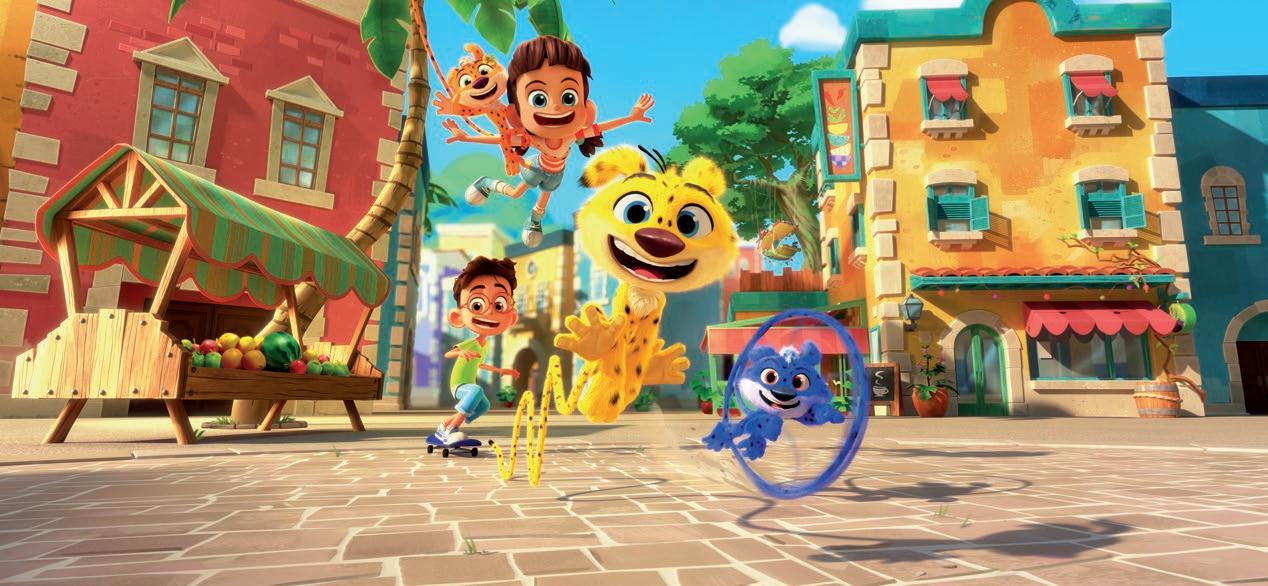
Future Today was drawn to the series’ exploration of underrepresented Caribbean cultures, as well as its emphasis on empowering kids to learn while
being adventurous, according to David Di Lorenzo, the AVOD platform’s SVP of kids and family.
Highlighting the wonders of the Bahamas—a lesser-known region with plenty of natural beauty—is the show’s big differentiator, says Goombay Kids creator and LFD CEO Stephanie Nihon. She adds that many kids, including those who live there, don’t know much about the Bahamas and are eager to learn about the country.

It’s worth noting that the potential audience for Bahamian children’s entertainment is significant: Roughly 20% of the island chain’s population is 14 years old or younger, according to the CIA’s World Factbook. There’s also a large diaspora of families originally from the Caribbean living abroad who are craving a taste of home that Goombay Kids can provide, says Nihon.
And while the series is rooted in Bahamian culture and history, the hope is that its mix of education, adventure and scenic locales will give it international legs. “There’s not a lot of kids content that represents the Caribbean,” says Nihon. “There also isn’t much of a kids industry in the Bahamas, and we want the world to know about the talent and stories we have here.”
LFD Productions is working on developing books based on the series, as well as seeking co-producers, broadcasters and licensing partners to expand its reach outside of the Caribbean.
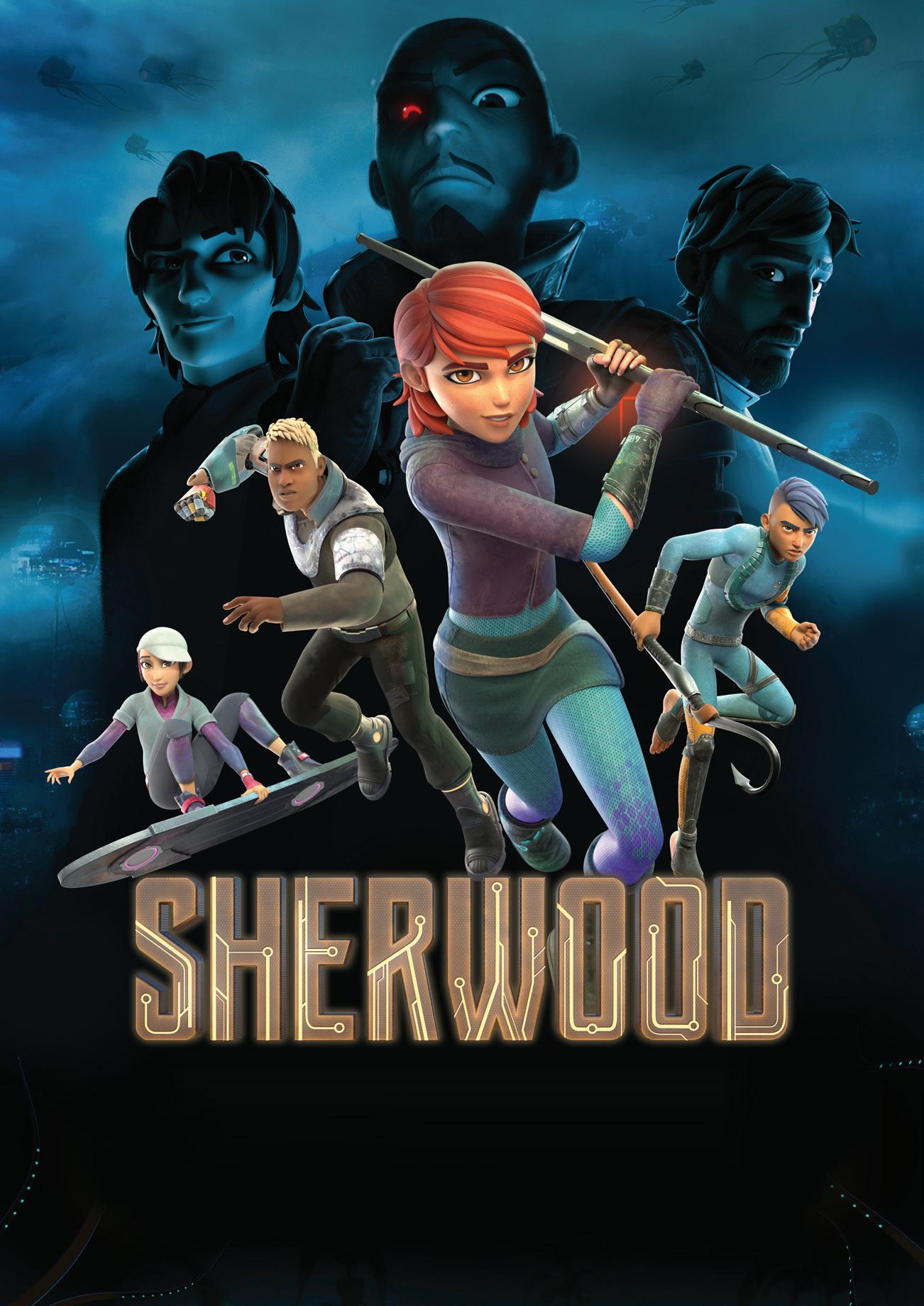

Mercury Filmworks moves into CG animation with a first project that’s fittingly about coming out of one’s shell.
BY: RYAN TUCHOWfter 25 years as a 2D animation studio, Canada’s Mercury Filmworks is expanding into CG in a bid to meet demand from clients, energize its talent and create content with an appealing aesthetic.
The studio is kicking off this growth with A Mouse Called Julian. Targeting preschoolers, this 52 x 11-minute series and 26-minute special are about a shy mouse who strikes up an unlikely friendship with a fox. Eventually, Julian learns that he doesn’t need to be

popular with everyone, but only needs a few good friends. The series is at the scriptwriting stage, with designs and an animation test available, and Mercury is currently seeking co-producers and distributors.
A story about coming out of one’s shell is a fitting metaphor for the company, which is breaking new ground by adding a CG animation pipeline to its operations. Mercury has been seeing more clients in the market for CG animation because of its high-end appearance, says chief content officer Heath Kenny, who adds that the Ottawa-based studio wants to use CG to differentiate the look of its own productions, while also offering more creative scope in order to attract and keep in-house talent on board.
Mercury already had a bit of CG experience under its belt after using the animation style to produce vehicles and larger objects on its popular 2D-animated series Hilda During recent animation tests, the studio also discovered that it can create the tactile aesthetic today’s sophisticated audiences have come to expect by blending CG into its 2D shows, and Kenny says there is interest from clients who want that look for their own projects.
With reboots abounding, Mercury needs the tools to tell original stories in original ways, Kenny adds. Working with CG will help the studio swing for the creative fences when designing a show’s look, which in turn will help its projects stand out with buyers. And beyond appealing to buyers, moving into CG should also help the company find and retain talent interested in learning new skills, experimenting and trying different techniques.
The studio will be using CG to produce two more upcoming series, Pangors of Puddle Peak and Octicorn & Friends After initially doing a 2D test for Octicorn, Mercury partnered with France’s Stim Studio to recreate the test in CG in order to learn the process. This led to co-producing the series with Stim—a partnership that wouldn’t have happened if Mercury hadn’t stepped out of its creative comfort zone, says Kenny.
Ultimately, it all comes down to what moves the company forward. “It’s a hard time for businesses, and being able to attract partnerships, give our storytellers a large toolbox and encourage creatives to think outside the box is how we create characters and stories that resonate.”

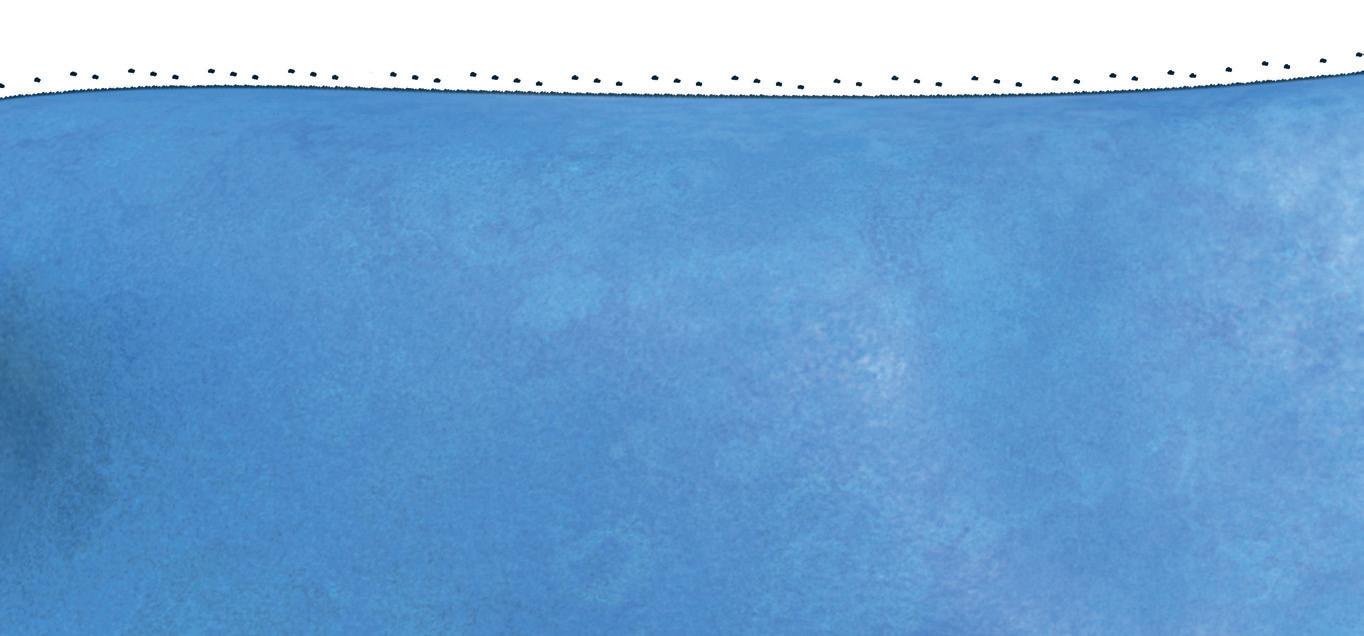



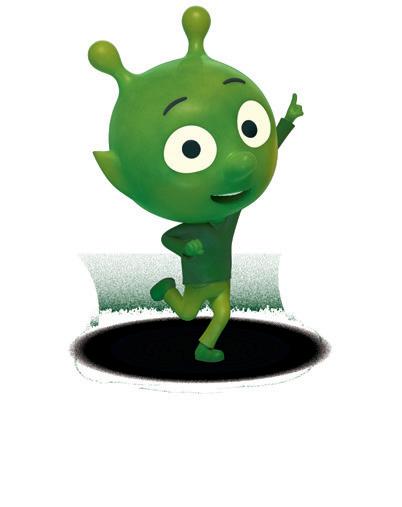

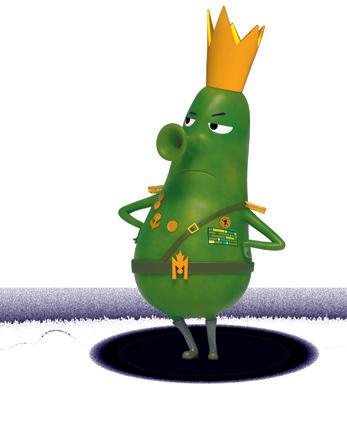



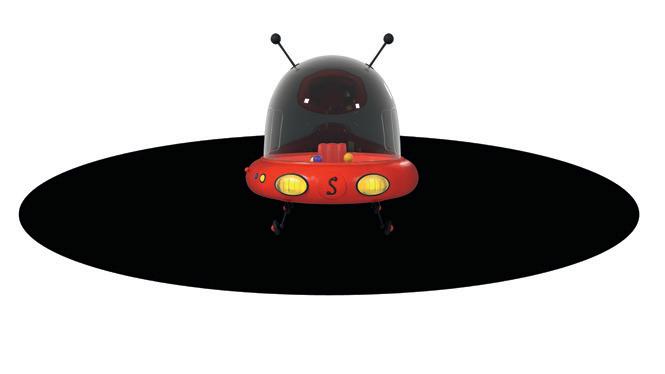



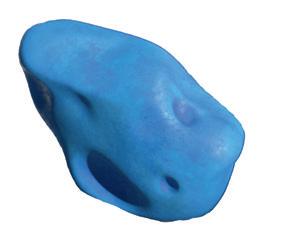


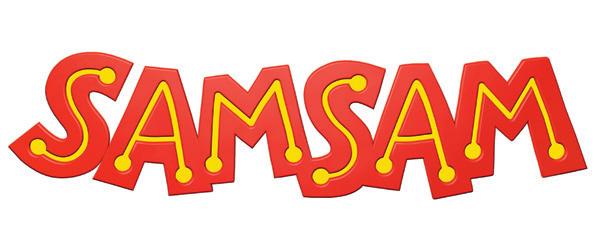


THE BIG GIG: CEO of Wonderworld.Fun
PREVIOUSLY: President of distribution at Splash Entertainment
MAKING A SPLASH: After three decades in the biz, Noriega knows sales and distribution like the back of her hand. “I got my education—I’ll say the ABCs of animation—at Splash Entertainment,” she says. Noriega spent 18 years at the LA-based company, and will always remember highlights such as closing its first-ever sale to Japanese broadcaster NHK for Splash’s Norm of the North films, and inking a worldwide deal with Universal Pictures for the Dive Olly Dive IP.
Noriega jokes that she was a “bit of a nerd” at school, initially chasing CPA dreams. But her career path shifted after bookkeeping stints led her to roles at entertainment companies like Mark Damon Productions and Kushner-Locke, where she developed a deeper knowledge of business affairs.

DRAWING A MAP: After leaving Splash in September 2022, producer Deepak Nayar approached Noriega with her biggest dream-come-true yet: Taking the reins of a brand-new animation company called Wonderworld.Fun, backed by Nayar’s Kintop Pictures, VFX/animation studio ReDefine (part of the DNEG Group) and Namit Malhotra’s Prime Focus Studios. Focusing on production/distribution of globally appealing IPs, the gig makes full use of Noriega’s primary skills, while also giving her an opportunity to paint a blank canvas with everything she always wanted to explore in animation. “We’re the new players on the block, but it’s a block we’re comfortable and familiar with.”
FAMILIAR YET FRESH: Just a month into the job, Noriega was already hard at work, pitching the first three series from Wonderworld.Fun at Annecy 2023, all targeting six to 11s. Among them is Secret Agent Jack Stalwart, which Noriega describes as Inspector Gadget meets James Bond. “The success of the IP [could be] huge, especially in the L&M sector, because Jack uses an array of gadgets for missions.” And the studio is mixing fantasy and real life in a toon called Walk Off The Earth in Space!, based on the Canadian indie pop-rock band.
Inspired by a promising reception at Annecy, Noriega’s next move is expanding this slate with projects that target more demos, such as preschoolers and girls. And while animation is the studio’s core focus, she won’t rule out a foray into live action someday, noting its increasing appeal with buyers. “As kids get a little older, they want to see a bit more reality.”
—Sadhana Bharanidharan

he need to sell content everywhere due to growing fragmentation in the children’s entertainment industry is a constant reality. But how many companies are truly optimizing fringe audience touchpoints for sales when more traditional media channels—TV, SVOD and, most recently, FAST—continue to command the most attention for dollars?
Two companies that haven’t shied away from exploring alternative avenues for growth, despite the urge to focus on safer bets, are Irish distributor Monster Entertainment and London-based prodco Acamar Films.

Monster is a brand management company that has been developing entertainment brands for worldwide distribution since the ’90s, with children’s animation as its core business. The company has sold a raft of content across TV, DVD, OTT, merchandising and publishing platforms, but it has also found success in a historically tricky market: in-flight entertainment.
Monster started selling shows to airlines in 1999 because they were looking for live-action music shows, and the distributor’s Planet Rock Profiles was available. Over the next decade, nearly 100 airlines ended up
acquiring the series, making it a hit in the in-flight entertainment space. Animation, on the other hand, was a tough sell at the time, recalls company owner Andrew Fitzpatrick.
“Every time I mentioned animation, they would say they had an output deal with Disney, for example, or that Warner gave them all of their animation for free on the back of a movie package,” says Fitzpatrick. “In a few instances, some would even say they didn’t really care about animation because kids weren’t buying airline tickets.”
In-flight entertainment has obviously changed a lot since then, as airlines pivoted from offering a few single screens for everyone, to providing an entertainment system on the back of each seat. Having more screens for more traveling families has helped extend the length of the average kids in-flight content deal from about two months to nearly a year, says Fitzpatrick.
He has also seen the airlines warm up to animation, especially at APEX Content Market, the industry’s leading content-buying event. “Just by being at the market every year and talking about animation, the airlines gradually became a bit more open, especially if their deals with the bigger studios had expired. It is difficult, though. If you only have animation, you probably won’t do any business. But for
us, we’ve stuck it out and built a pretty good business in terms of animation sales.”
Of course, Monster’s strong in-flight business took a turn for the worse during the pandemic when airlines had to temporarily ground their fleets. But after attending a busy APEX market in Istanbul this past April, Fitzpatrick says the business is finally returning to normal. “The volume of business in terms of the amount of content airlines are acquiring is almost back to where it was preCOVID,” he says, although license fees aren’t quite back to pre-pandemic levels, when airlines normally paid between US$1,000 and US$1,500 per half hour.
To boost its airline business post-pandemic, Monster is taking advantage of higher demand for kids and family movies on flights. A feature film deal can be worth up to 10 times more per minute than a halfhour series deal, so the incentive is there, says Fitzpatrick. “We weren’t doing features at all for airlines pre-pandemic, and we now sell 23 of them,” he notes.
Last year, Monster picked up the in-flight distribution rights to Oscar-nominated movie Wolfwalkers from Irish prodco Cartoon Saloon, and to date has sold it to more than 25 airlines, including American, Virgin Atlantic, Emirates, Aer Lingus, Lufthansa and Korean Air.
Maximizing content sales in an increasingly fragmented kids space is challenging, but Monster Entertainment and Acamar Films are proving success is achievable—even in some unlikely places.
In 2022, the company also acquired in-flight rights from distributor GKIDS for 21 animated features, including another Cartoon Saloon Oscar nominee, Song of the Sea, and Brazilian Academy Award-nominated feature Boy and the World. This year, Monster returned to Cartoon Saloon to secure the in-flight rights to Puffin Rock and the New Friends, in partnership with sales agent Westend Films.
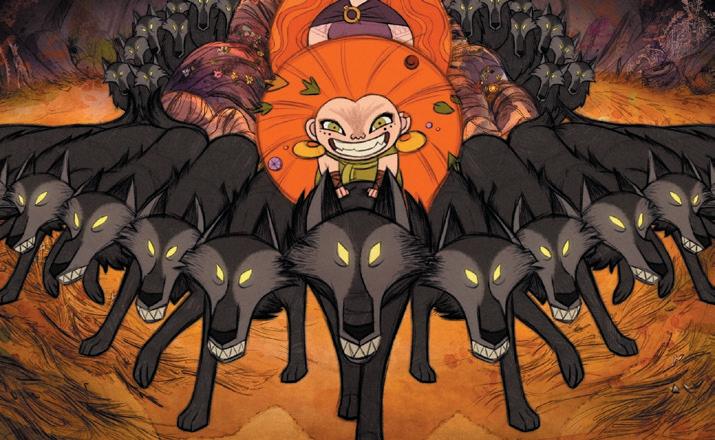
Looking ahead, Fitzpatrick says the biggest challenge for Monster in terms of in-flight sales is getting airlines to focus on its content. “We’ve had some good success, but getting their attention is an ongoing challenge when you consider the sheer volume of content that is on offer to airlines all the time.”
Some of the kids genres that are popular for airlines right now include nostalgia shows, educational titles, influencer-led shows from digital-first channels and programs featuring underrepresented groups, says Emma Gunn, director of acquisitions and content partnerships at Spafax, a global travel media agency that specializes in acquiring in-flight content for airlines from distributors like Monster.
“We also see exciting opportunities for more gamification and interactive programming,” says Gunn. “For example, with consumer products and improved interactive user interfaces, passengers will benefit from a more engaging in-flight entertainment experience that reflects current trends.”
As for other fringe opportunities in the kids space that complement more traditional
media, Acamar Films has had success on the big screen for the past five years with its specially produced Bing theater experiences.
Targeting preschoolers and their families, the morning matinee events kick off with Bing-themed games, face painting and coloring activities, meet-and-greets and entertainment by local performers. Toddlers are then treated to a 65-minute feature film consisting of seven popular episodes from the 104 x seven-minute CG-animated series, intertwined with 15 minutes of exclusive additional animation.
Since the majority of the content isn’t new, Acamar offers affordable pricing: two tiers of seating at around US$4 and US$5. “It would be unfair to charge the price of a brand-new feature,” explains Eroulla Constantine, the company’s director of sales and distribution.
The latest experience— Bing and his Friends at the Cinema —is one of four Bing cinema packages Acamar has produced. The first, Bing at the Cinema , premiered four years ago in the UK at 83 cinemas, in partnership with theatrical exhibition company Vue. Bing’s Christmas and Other Stories arrived a year later, followed by Bing’s Animal Stories in 2021.
To date, Acamar has launched the experiences in the UK, the Netherlands, Poland and Italy—European markets where Bing has had the most success across traditional media, streaming and consumer products.
“Once we achieve a certain audience affinity in a territory, we look at how we can build on that in the cinema space,” explains Constantine. “Theatrical adds another access
point for kids to enjoy Bing, and it also raises our profile from a brand perspective.”
In terms of numbers, more than 200,000 tickets have been sold to date across all of the packages, with more than 45,000 attendees in the UK alone for Bing’s Christmas, according to Constantine. “That was our biggest sellout. Meanwhile, we have proved our staying power in markets like Poland, where Bing’s Animal Stories was extended from six weeks to 25 weeks.”
Beyond Bing’s existing popularity in these territories and the value of the brand’s event experiences, the packages have also performed well because their 10 a.m. start times work for parents with toddlers who usually wake up very early and may need something fun to do halfway through their morning. “It’s also a time of day when cinemas don’t see much business for more grown-up fare, so it fits quite perfectly,” says Constantine.
The packages have had the most success in Poland and the Netherlands—territories where the idea of introducing very young children to event cinema is well established and trusted, she adds.
“Our biggest challenge with the packages is that in many territories, there isn’t necessarily an event cinema culture. So theaters offer a lot of the usual general releases, but not this sort of preschool block element. We hope this grows in many regions in and out of Europe.”
Long term, Acamar’s big ambition is to have cinema releases wherever Bing is found—and the show currently airs in 130 territories. “Localization is a key priority for us as we build Bing into a global success and an evergreen title,” notes Constantine.
For Fokko Vonk, who has worked with Acamar and Dutch family-film distributor In the Air on three Bing features as owner of Amsterdam-based distributor Just4Kids, the preschool package has the potential to fill industry white space as an affordable way to bring TV series into the cinema.
“It’s often really difficult to find something for three- to five-year-olds in theaters,” says Vonk. “But if you have a popular preschool TV show, offering a stitched version for cinemas is a very interesting way to bring your series into a territory. Plus, these are often kids’ first cinema experiences, so it’s good for the future of the theatrical market and for children, too.”
rom classics like Scooby-Doo, Where Are You! to modern takes like Monster High, the horror genre for younger viewers has evolved over the decades without ever falling out of fashion. And now it seems to be on a notable upswing.
According to a recent Dubit Trends survey, two- to 15-year-olds in some key countries have developed a greater interest in horror over the last two years. Its popularity rose by 40% in the US and 24% in the UK between 2022 and 2023. And from 2021 to 2022, it grew 36% in Canada and 19% in Australia.
Digging a little deeper, Dubit reports that kids love horror because it helps them develop self-preservation instincts, exercises their imagination and provides a rush of adrenaline. Additionally, the data suggests that when this content is done right, it offers young viewers a safe way to confront their fears.
Producers are aware of this, and some are delving into the genre for the first time with different approaches to entertain and thrill the next generation of kids.
In the US, DreamWorks Animation is producing Fright Krewe, its first supernatural-focused horror show for pre-teens. The 2D-animated series (10 x 22 minutes) revolves around a group of misfit teens who want to save New Orleans from a demonic threat. Disneyowned Hulu and NBCUniversal streamer Peacock ordered the series in June for an early October launch.
Created by horror master Eli Roth (Hostel), Fright Krewe aims to fill a void in the market for pre-teens, say executive producers and showrunners Joanna Lewis and Kristine Songco. “Tweens are very attracted to the horror genre. They are looking for content that is scarier than the shows they were watching before, but maybe they’re not quite ready for gore yet,” explains Songco.
She and Lewis, who have worked together on other kids series—most recently as co-executive producers of Jurassic World: Camp Cretaceous—decided to lean into supernatural elements because older kids are
attracted to the unknown. And combining scares with topics teens can relate to, such as friendship, makes Fright Krewe work for them, says Lewis.
DreamWorks was already looking for a way to tap into a burgeoning demand for horror when the Fright Krewe series concept came through the door. “For the last few years, we’ve seen more of an appetite from buyers for projects in this spooky/ scary arena,” says SVP of TV development Ben Cawood. “There seems to be a desire to find those types of shows that will give you a jump-scare or quick jolt to boost the viewer’s adrenaline.”
Unlike DreamWorks, France’s Cyber Group Studios is focusing on comedy in its first 2D-animated spooky series, which it presented at Cartoon Forum last month and is pitching to buyers at MIPCOM. Aimed at kids ages six to 11, Erica & Trevor vs. Spooky Monsters (26 x 22 minutes) follows a 10-yearold boy and his 16-year-old babysitter as they try to stop movie monsters that have entered the human world.
The mix of comedy and horror is evergreen and universal, says Pierre Belaïsch, Cyber Group’s SVP of creative development and artistic production. “Most kids, of any age and from any country, love spooky and comedy. So a series with this mix will always have international reach. Kids are attracted to that roller coaster of emotions they get from

With horror content gaining in popularity among young viewers, producers are looking for ways to deliver more scares for kids.Shows like Erica & Trevor vs. Spooky Monsters mix comedy and horror—a winning formula with international appeal


he horror genre is also gaining momentum off screen. Teens, in particular, keep showing interest at retail in spooky consumer products, says Jakks Pacific senior marketing director Jeremy Sueper. That’s why the toyco has expanded its offering for these young scare-seekers based on one of the things they like the most: video games.
In May, the company inked deals with Texas-based Rooster Teeth Productions and Joey Drew Studios in Canada to launch a line of action figures, plush toys, games and costume accessories based on the Bendy video game series (pictured). The new products build on the brand’s existing costumes that Jakks’ Disguise division has been making since 2018.
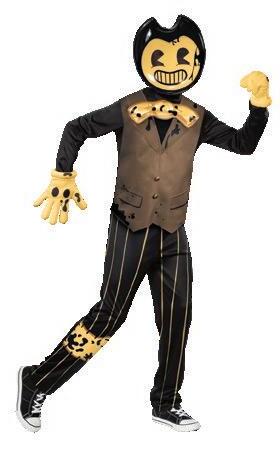
Jakks has focused on video games because they translate well to the consumer products arena, says Sueper. “It's easier to create toys for fans of an already developed property and grab their attention.” Adds Disguise president and general manager Tara Cortner: “The aesthetic of a horror overlay on a game makes it very appealing for a Halloween costume.”
these kinds of productions…one moment they feel scared, then they can laugh about it.” Erica & Trevor vs. Spooky Monsters also aims to appeal to co-viewing audiences through ’80s pop-culture references to things like VHS tapes, Walkmans and video rental stores.
Making this broader demographic connection is very important to buyers now, says the studio’s chairman and CEO Dominique Bourse.
Co-produced by Ireland’s Dream Logic Studios and Melusine Productions in Luxembourg, Tales of Terror (10 x 11 minutes) is a 2D-animated miniseries rendered in a distinctive Victorian-gothic style. UK distributor Serious Kids is on board as an executive producer.

Targeting kids ages seven to 12, the series stars an 11-year-old boy who loves to listen to his uncle’s spooky stories—until he realizes that some of them are true. Based on a book series by Chris Priestley, Tales of Terror has already started production, with delivery set for winter 2024/2025. The partners are looking for buyers.
The timelessness of the horror genre and Serious Kids’ past success with spooky concepts attracted the distributor to Tales of Terror, says founder and CEO Genevieve Dexter. For example, 18 broadcasters have acquired the 30-minute Halloween special The Ghastly Ghoul (Dream Logic and Lupus Films) from Serious Kids since its premiere in October 2022 on Sky Kids in the UK and German channel KiKA.
One of the biggest challenges when it comes to producing a horror series for kids is striking the right tonal balance. The content needs to scare kids, but not so much that it discourages them from watching, or causes their parents concern. “Broadcasters traditionally don’t do horror because it can be quite difficult to find that sweet spot,” says ABC Australia’s head of children’s content Libbie Doherty.
ABC has done well with its live-actioner Crazy Fun Park, which has sold to international broadcasters including BBC (UK), YLE (Finland), NRK (Norway), LRT (Lithuania), TVNZ (New Zealand) and RTV (Slovenia) since it launched earlier this year on ABC ME. Distributed by the Australian Children’s Television Foundation (ACTF), the 10 x 30-minute series centers around a teen who meets the ghost of his dead best friend in an abandoned theme park.
Crazy Fun Park works because its difficult subject matter is depicted in a way that’s appealing to teens, says ACTF head of content Bernadette O’Mahony. “That’s why we decided to take the series.”
Looking to build on Crazy Fun Park’s success, ABC Australia has greenlit a new comedy show with a horror touch called The Spooky Files (10 x 24 minutes). Aussie studios Tony Ayres Productions and Megaboom Pictures are co-producing the series, which targets eight- to 10-year-olds. It explores the fears kids experience while growing up, with a balanced mix of horror and comedy that frightens kids without scaring them off.
The 10-part Tales of Terror miniseries is a gothic ghost story told in a distinctive 2D-animation style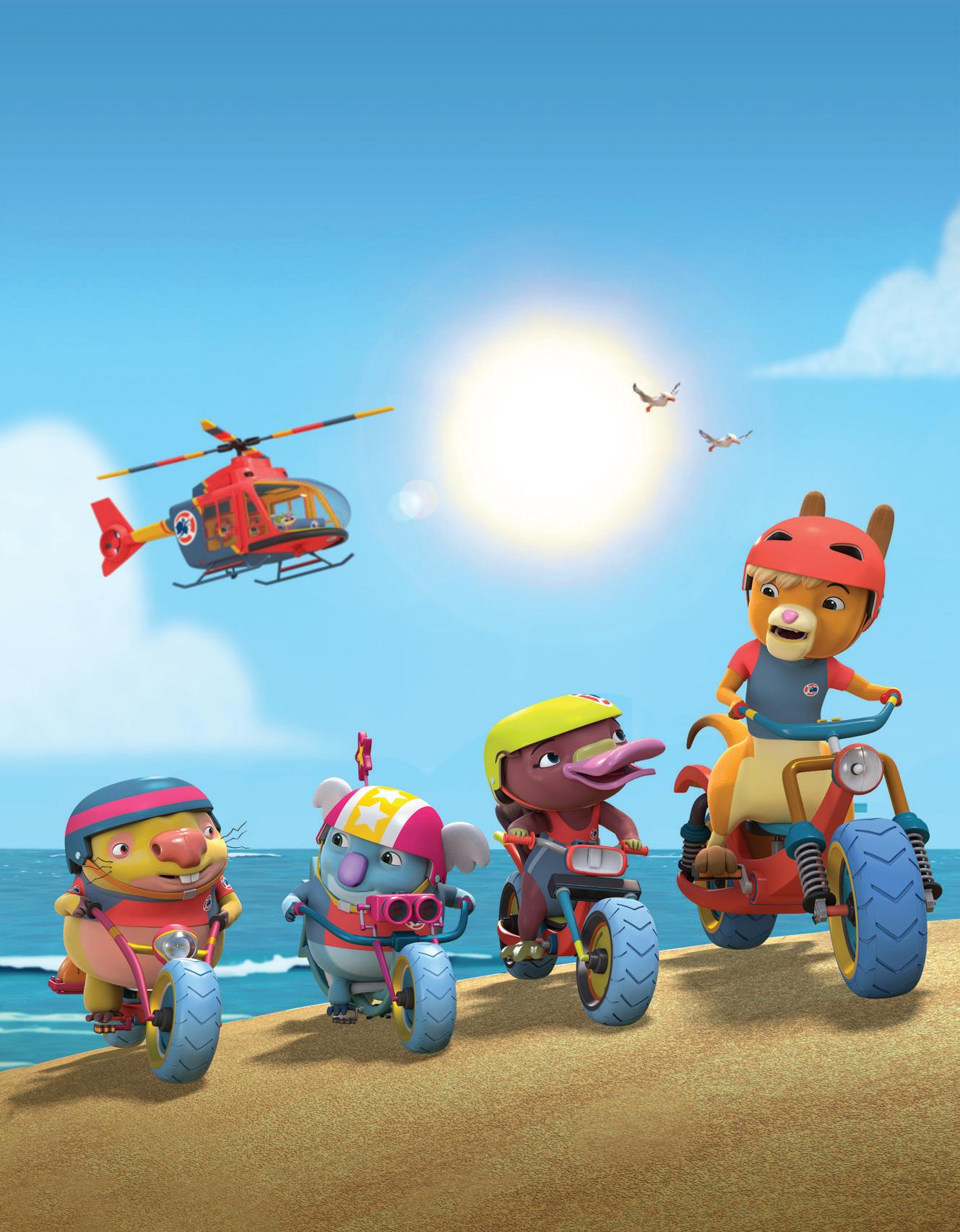

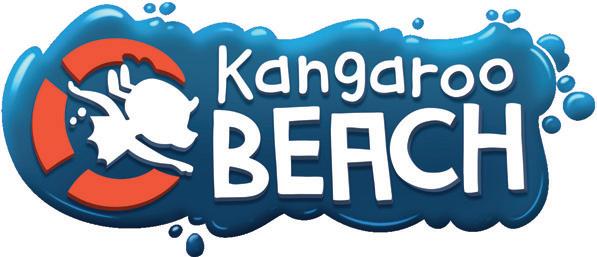
Style-focused programming has traditionally catered to adults, but there’s a slew of new TV shows aimed at kids about to walk the runway.
BY: SADHANA BHARANIDHARANor most visitors to Las Vegas, it’s the bright lights and mammoth buildings that catch their eye first. But something much closer to the ground struck awe in producer Antoine Wade. “I saw this 12-year-old kid wearing the same Versace shoes that I had,” he recalls. “It spoke to me about how fashion and the love of sneakers have evolved.”
This anecdotal observation touches on what seems to be a larger shift among today’s kids, who may be the most fashion-forward generation yet.
There’s no longer a “time lag” in trends and style discourse reaching kids, notes Kat DePizzo, president of Justice Design Lab. “[They] are constantly inundated with information,” she adds, gesturing to her smartphone and noting that it’s a different world from the days when they had to flip through a teen magazine to get their fashion fix.
A cursory glance at the major social platforms shows teen-driven fashion subcultures on TikTok and young vloggers who film and share everything from back-to-school style advice to hair-braiding tutorials. Even youngerskewing platforms like Roblox have gained prominence as hubs for virtual fashion.

And yet this trend feels underserved in the kids and family TV landscape since most fashion-adjacent titles (like Project Runway or even Emily in Paris) fall into the adult content category. Is this an opportunity for a few producers to flip the script?
The imbalance is not lost on Richard Bradley, CCO and co-founder of British studio Lion Television. “As far as we know, there’s no fashion design show for youngsters,” he says.


And he finds this peculiar, given how much fashion-centric content the younger demo consumes and manifests on the internet.
“We wanted to create a show [that] celebrated the creativity of young people at a time when a lot of media concentrates on them as consumers.”
That’s why Lion is producing Style It Out, hosted by TV presenter Emma Willis. This 11 x 28-minute series will launch on CBBC in 2024, featuring stylists Ayishat Akanbi and Jorge Antonio as judges. Its premise challenges aspiring kid designers/stylists to come up with the perfect outfit for a given theme, using only secondhand and recycled materials.
The sustainability twist is what attracted BBC Children’s commissioning editor Melissa Hardinge, who also appreciates how the show raises the fast-fashion issue, tackles themes like body positivity and, notably, features clothing options that are within the financial reach of most families. “Fashion has been a difficult area for TV to commission into for a young audience because previously it was about brands and shopping,” she says.
This fresh spin is already resonating with 10- to 14-year-olds, who inundated the Style It Out team with contestant applications. “There has never been a time when young people have been so vocal about expressing their own personal style and individuality,” Hardinge adds.
And that’s not all that’s disrupting the familyfriendly reality category—Wade teamed up with producers Rhyan LaMarr and Marcus Andrews this year to create the footwearfocused series Just for Kicks. “Sneaker culture transcends age gaps,” he notes, and that makes it a great theme for factual co-viewing. (Rooted in the enthusiasm for sneakers and the art of collecting and trading them, the sneaker subculture came to life in the US in the 1980s, before going global in the ’90s.)
Chicken Soup for the Soul Entertainment will launch Just for Kicks on its Crackle AVOD service this fall. The series features a talk-show format mixed with gaming elements, with entertainment and NBA stars telling the story behind a pair of sneakers they own, and then taking part in games and challenges.
The show’s eclectic lineup of guests range from old-school rap artists like Bun B to modern influencers such as Adam W. “It’s hitting both ends of the spectrum, as it relates to up-and-coming gamers and hip-hop for the teen audience, plus the nostalgic icons [for their parents],” says Michele Fino, Crackle Connex’s head of branded entertainment.
Even for preschool viewers, who may not be quite as fashion-savvy yet, producers are finding creative ways to make clothing and
style central to the narrative. In Amazon Kids+ original series Hello Kitty: Super Style!, a super-powered bow lets the titular feline change into a wide variety of outfits and use the skills associated with each one, from cooking in a chef’s uniform, to mystery-solving in detective gear. “It taps into the empowerment kids feel when dressing up,” says the streamer’s head of original series, Veronica Pickett, who found the sweet-and-stylish takeaway perfectly suited to the show’s four- to eightyear-old target audience.
The producers saw Hello Kitty as the right franchise for a fashion angle. “What struck us in our research about Hello Kitty was how she has always been designed in different costumes from around the world,” says Philippe Alessandri, CEO of co-producer Watch Next Media. “That [universality] is what makes the character.”
One company that has aced the formula of adapting fashionable products into content is toyco MGA Entertainment, which has several big brands under its trendy belt, including the ambitious fourth season of breakout series Rainbow High that rolled out over the summer on YouTube. While the overarching concept centers around a girl squad at a visual arts school, MGA CCO Anne Parducci says this season (aptly titled “Project Rainbow”) plays up “spoofs of many of the fashion-related reality
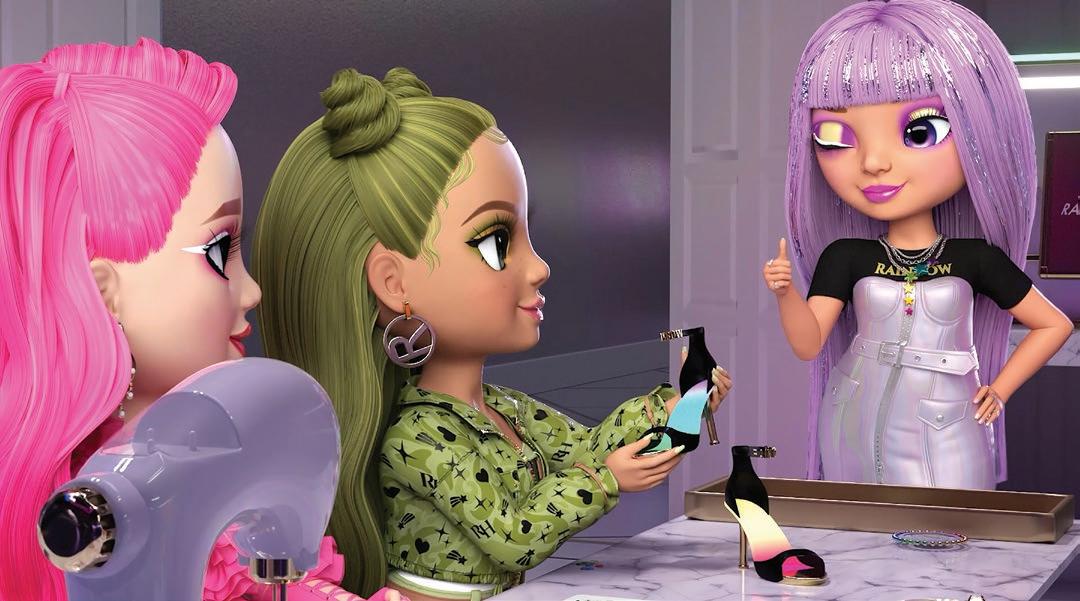
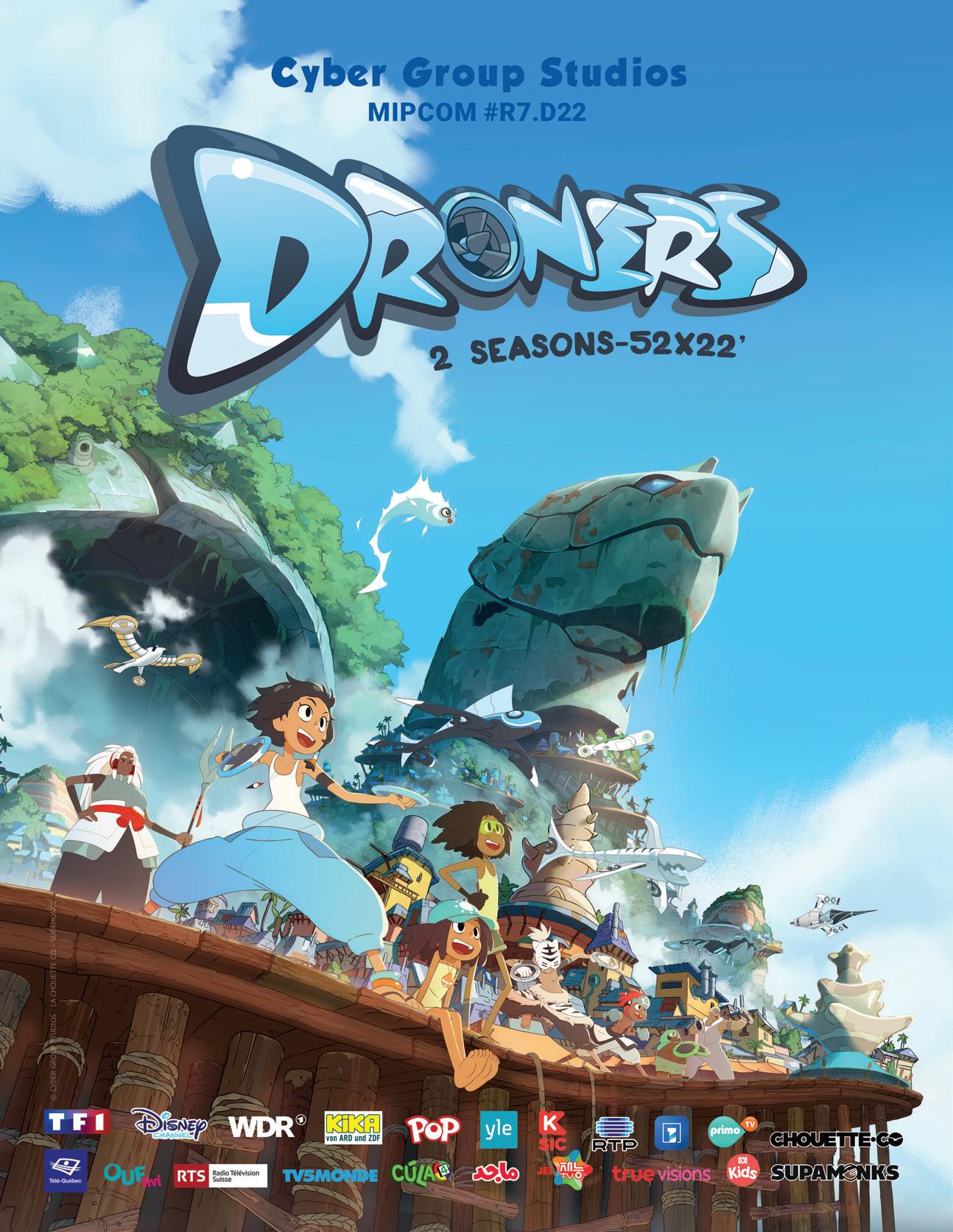
TV shows that we’ve seen in the past,” including familiar tropes like contestants dramatically voting someone off in each round (with the more kid-friendly consequence of having to head back to class).
Besides nostalgia, MGA is also mining celebrity power for its franchise-building push for the IP. When a storyline took the students to Malibu, MGA brought fashion icon Paris Hilton on board to voice the headmistress at Pacific Coast High. This move proved lucrative, generating 3.8 million views on YouTube for Hilton’s first appearance, and leading to a fan-demanded Rainbow High doll created in her likeness.
As another example, when MGA launched a Mini Bratz line based on beauty mogul

Kylie Jenner in August, the team developed specific social media content—such as animating the dolls to sashay along a runway for the launch video on TikTok. Such “campy” content builds hype among multiple generations, from tweens to kidults, says Bratz art director Chelsea Green. “Users want to see what unexpected turn the content will take next and have fun looking for memorable fashion references and Easter eggs—like the large boots in the [background of the launch video] alluding to something more to come.”
Ancillary opportunities are obviously a big boon for fashion-based content, as evidenced by Crackle’s plans to bolster Just For
Kicks. “We’re thinking about the broadcast experience,” says Fino, adding that ideas include potential shopping overlays (such as QR codes that link to a brand’s online store) or sponsorships that don’t interrupt the viewing. “For example, we’re [looking at] some technologies where hitting pause [can bring up] a fashion brand’s Instagram feed in real time.”
Looking ahead, early plans are in the works to explore localized offshoots of the sneaker series, according to Wade and LaMarr. “Because it’s not just in America—we could have a UK version with soccer players on as guests,” Wade enthuses. “Or a version in Asia, where the sneaker market is huge.”
As factual content slowly ages down, producers like Canada’s Waterside Studios are also catching the fashion bug to elevate their fictional content. Any premise dealing with fashion can provide an “aspirational world that young audiences love to pull back the curtain on,” observes author-producer Jeff Norton, who heads up Waterside.
Settings like boarding schools and elite sports are popular in teen content, so it’s no surprise that Holly Smale’s novel Geek Girl which follows a neurodivergent 15-year-old as she juggles high school and a foray into modeling—proved perfect for Waterside, which is developing it as a same-name live-action series (10 x 30 minutes).
Netflix and Corus have already greenlit the project, and Norton is confident that the premise has all the makings of compelling teen TV. “As a narrative milieu, the fashion world has it all—big personalities, high stakes, byzantine social structures…and, of course, incredible clothes.”
A voice acting stint on toon series Rainbow High by Y2K fashion icon Paris Hilton led fans to demand a doll in her character’s likenessThere has never been a time when young people have been so vocal about expressing their personal style and individuality.
—Melissa Hardinge, BBC Children’s
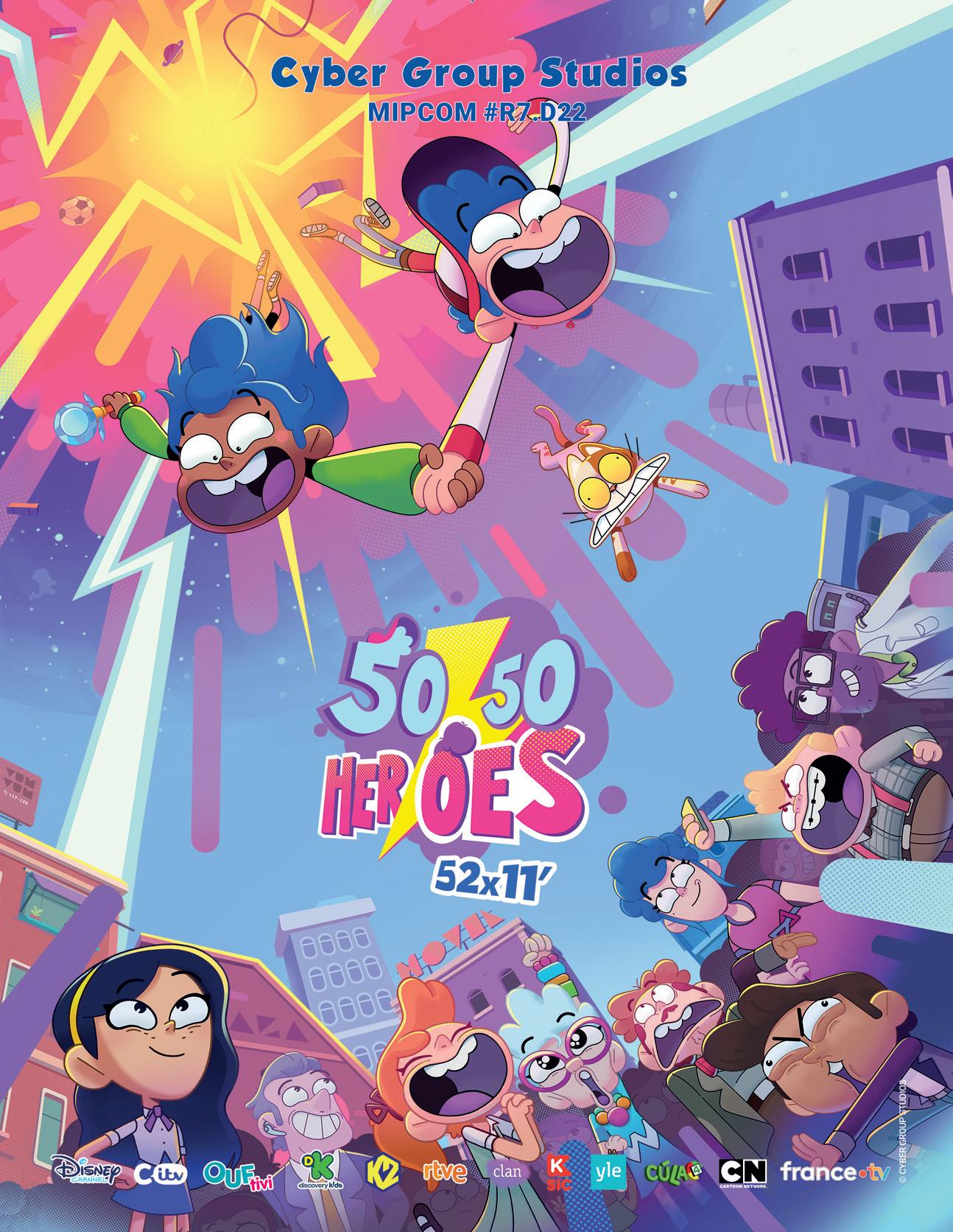
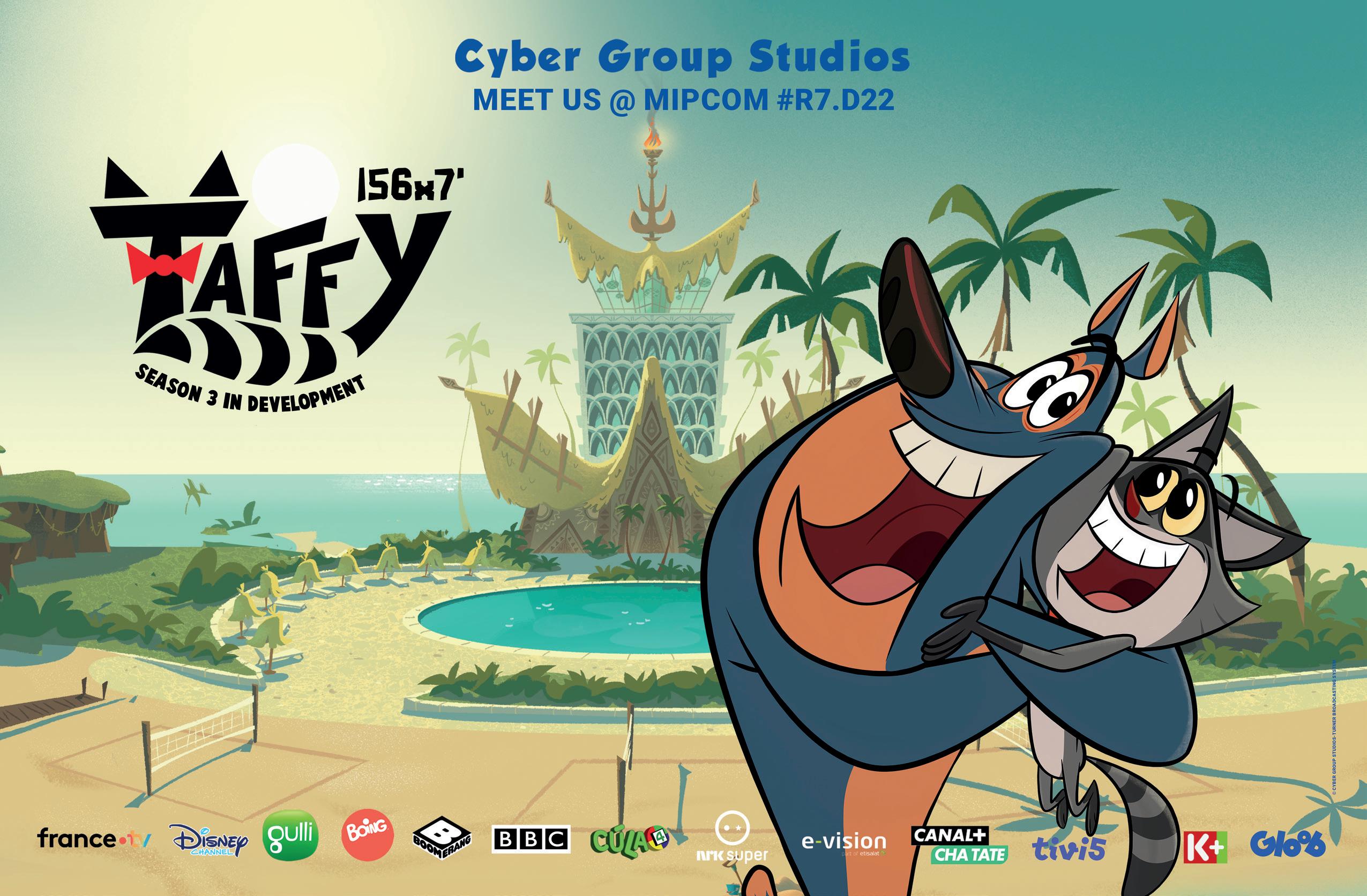

Kidcos are stepping out of the toy aisle and exploring the wide world of lifestyle categories—securing more placements for their IPs in retail and building up valuable brand affinity with their target audiences.
 BY: COLE WATSON
BY: COLE WATSON
etween excess inventory management and strained relationships with mass retailers, it’s a hard time for toycos and emerging brands looking to build up momentum in the toy aisle. But that’s just one section of a store—and the apparel, footwear, grocery and beauty departments are ripe for kid-skewing IPs with aspirations to expand their licensing footprints.
Putting things into perspective, the global children’s apparel market alone generated more than US$286 billion in revenue last year and is forecast to grow 2.5% year over year until 2030, according to Germany-based research firm Statista. And that’s just one of many categories kidcos can dive into to help increase their retail presence and engage new demographics.
“Lifestyle is so much more than just products,” says Gabriela Arenas, Sesame Workshop’s SVP of global product licensing. “Our main pillars are toys and publishing, but our brand also appeals to older kids and millennials. Lifestyle collaborations let us do things that are unexpected and unique, which resonates with our multi-generational audience and keeps them engaged with the brand.”
Sesame began to cement this lifestyle strategy in 2018 when it first partnered with New York-based apparel company Bombas to develop a range of limited-edition Sesame Street socks featuring characters like Elmo, Cookie Monster and Big Bird. For every item consumers purchase, Bombas donates an essential clothing
Meet the licensees behind products that help super-fans express deep brand love in their everyday lives.
This Texas-based company has been producing ice chests, drink containers and accessories since 1947. And it’s keeping things frosty in the licensing space, tapping iconic brands like WWE and Sonic the Hedgehog for limitededition cooler collections.
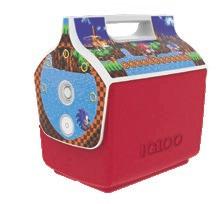
The sporting goods manufacturer is bringing back the skates of yesteryear with designs that throw back to the ’70s and Y2K. And kids and families can recreate Barbie and Ken’s neon skate outfits from the feature film, with matching protective pads and inline skates.
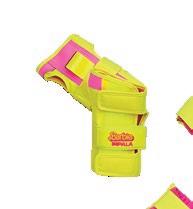

item to homeless shelters across the US. The apparel company has donated more than 100 million items to date since it formed in 2013, and has launched five Sesame Street sock collections over the past five years.
“Because we’re a nonprofit, we’re in a very unique position in the entertainment world,” says Arenas. “[Sesame] needs to partner with mission-aligned companies that share its common values. And when that happens, it helps the collaboration feel genuine and impactful to our audience.”
Another notable collab for Arenas was signing on with Footlocker and Champion for a Blank Slate apparel program in 2021 that allowed local artists to take Sesame’s beloved characters and reimagine them in new styles and artwork on hoodies and shirts. These included character “dissections” of The Count, Bert and Ernie from American artist Jason Freeny, and pop art apparel by Washington’s Naturel (Lawrence Atoigue).
As it does with most of its apparel deals, Sesame launched these ranges with a limited-time window to increase the collectibility of each item. “Each of our limited-edition collaborations typically lasts between six months to one year,” says Arenas. “This allows us to keep things feeling fresh for our audience throughout the year, and gives them enough time to get all the products. It also allows us to work with a wider range of bestin-class partners across different markets, including artists and athletes.”
The Workshop is currently looking to expand its lifestyle strategy beyond the realm of consumer products. Earlier this year, United Airlines tapped Oscar the Grouch to educate travelers about sustainable aviation fuel as its first chief trash officer. And LA-based financial service company NerdWallet has recruited The Count to help soothe the economic
The brand’s iconic foam clogs, which first hit retailers in 2002, are building renewed momentum in the market with Gen Z through licensed footwear collections. The company has done deals with several evergreen brands in the kids space, including Minecraft, Pokémon and Lucky Charms.
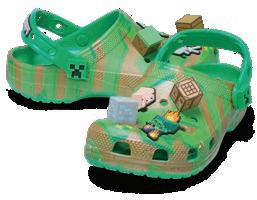
anxiety families are feeling from today’s higher cost of living. The nonprofit is also dipping into gaming platforms like Roblox to help kids express their lifestyles online through digital outfits and items for their avatars.
While Sesame Street is able to reach a wide range of demographics with new collaborations, Londonbased Moonbug Entertainment is focusing all of its lifestyle efforts on the preschool market. The key challenge here isn’t just getting kids to develop an interest in their style and clothing; it’s also to convince parents and guardians that the products are high-quality and worth purchasing, says Joan Grasso, Moonbug’s head of consumer products in the Americas.
“Lifestyle is becoming increasingly important when it comes to building a consumer products program for the preschool market,” says Grasso. “Typically, we’ll start with toys and get them placed, but it’s the apparel that has become a cornerstone for building up brand affinity and engagement with our fanbase, so anywhere we can do that off screen is critical.”
Just as critical is the timing of these products, and Moonbug focuses on extending its brand’s narratives off screen by taking the most popular episodes of its shows—including Blippi and CoComelon—and looking for ways to adapt them into new lifestyle designs, says Grasso.
“Once we secure a toy partner, we are already pitching in other categories,” she explains. “Six months after our toys launch, we hope to have softlines out in the market, beginning with apparel and sleepwear. More lifestyle categories like home and footwear will come a year later, which is the standard timings we like to follow.”
Moonbug started rolling out its CP programs in North America and the UK in 2020, and now the
Who says furniture can’t be fun? This Canadian company makes modular chairs, couches, wedges and rockers that kids can arrange to create slides and forts. It holds licensing agreements with both The Wiggles and Moonbug Entertainment for branded couch collections.

The Nebraska-based toyco is best known for its wide range of waterplay products, including pool floats, inflatable sprinklers, water cannons and splash pads. Now, BigMouth is expanding into winterplay by partnering with Jazwares on Squishmallows inflatable snow tubes.


company is expanding into the Latin American region, which Grasso also leads. She notes that apparel has just begun to roll out in the region, with retailers ordering more lifestyle products since CoComelon and Blippi launched on Mexican free-to-air channel Canal Cinco in July.
“The core product categories are similar for each new territory we enter, but we have to design the products in a unique way for each one to ensure that we’re covering the trends and designs that are relevant there,” says Grasso. “We have also built a product development team that is studying and observing the global trends they expect will be relevant from 18 months to two years out.”
With some help from product development, the number-one trend on Moonbug’s radar is footwear. The global footwear market generated US$382 billion in revenue last year, according to Statista. The US does the lion’s share of this business at US$88 billion, followed closely by China’s US$83 billion. Meanwhile, Italy and Spain are paving the way for more sustainable materials and production methods in the field, according to the report.


“Footwear is definitely one of the largest categories for us, and we have a few partnerships that we’ve already secured in that space,” says Grasso. “We’ll continue to look for more opportunities in the future, and it’s a good category across the industry as a whole. We are seeing footwear collaboration announcements constantly.”
Meanwhile, footwear was just one piece of Mattel’s strategy to turn its first feature film into a tentpole moment in pop culture this year. The toyco is riding high after the massive box-office success of its Barbie movie, a co-pro with Warner Bros. Discovery. The live-action film earned US$1 billion at the box office in just 17 days, making it the second billion-dollar blockbuster this year after Illumination’s The Super Mario Bros. Movie
In the lead up to the film’s release, Mattel inked more than 165 licensing deals for Barbie that will continue to roll out into next year through retailers, e-commerce platforms and restaurants. These range from traditional products like a Hot Topic apparel
collection and Loungefly backpacks, to far-reaching licensing deals that include a new line of luxury pool floats from LA-based FUNBOY, branded eyelashes and makeup in partnership with NYX Cosmetics, and an exclusive Pink Burger combo from Burger King Brazil.
“From the start, we had a plan to extend the reach of Barbie beyond the movie—our aim was to execute a widespread cultural event for people around the world to take part in,” says Josh Silverman, Mattel’s EVP and chief franchise officer. “[Lifestyle] products provide a way for individuals to experience and express their brand affinity for Barbie outside of traditional doll play.”
All of the movie tie-in licensing deals helped spark a pop-culture movement on social media, where Barbiecore and Barbenheimer hashtags motivated families to paint the town pink on their way to the theater while dressed in their best Barbie- and Ken-inspired outfits, adds Silverman. To date, the Barbiecore movement on TikTok has generated more than 980 million views, helping expose both the brand and movie to new audiences.
While the film has certainly highlighted Barbie’s star power, the doll has been built as a lifestyle icon for girls since her earliest generations. “From Barbie lunchboxes in the 1970s, to a collaboration with Moschino for a ready-to-wear runway collection in 2015, Barbie has an extensive history as a lifestyle brand,” says Silverman.
Hot Wheels and Barney are the next Mattel brands on deck for film adaptations, and while the toyco will aim to execute a similar brand-building strategy as Barbie through lifestyle products deals, the team needs to approach its product mix with a new model for each property, says Silverman.
“The lifestyle product mix is all dependent on who our audience is and how we are trying to connect with them. Our brands aren’t going to necessarily have the same product mix every single time because the fan bases are different. What works for Barbie may not work for Monster High or Thomas, and vice versa. It’s all about making meaningful, authentic connections that provide something special to our fans.”
Lifestyle is becoming increasingly important when it comes to building a consumer products program for the preschool market.
—Joan Grasso,Moonbug Entertainment
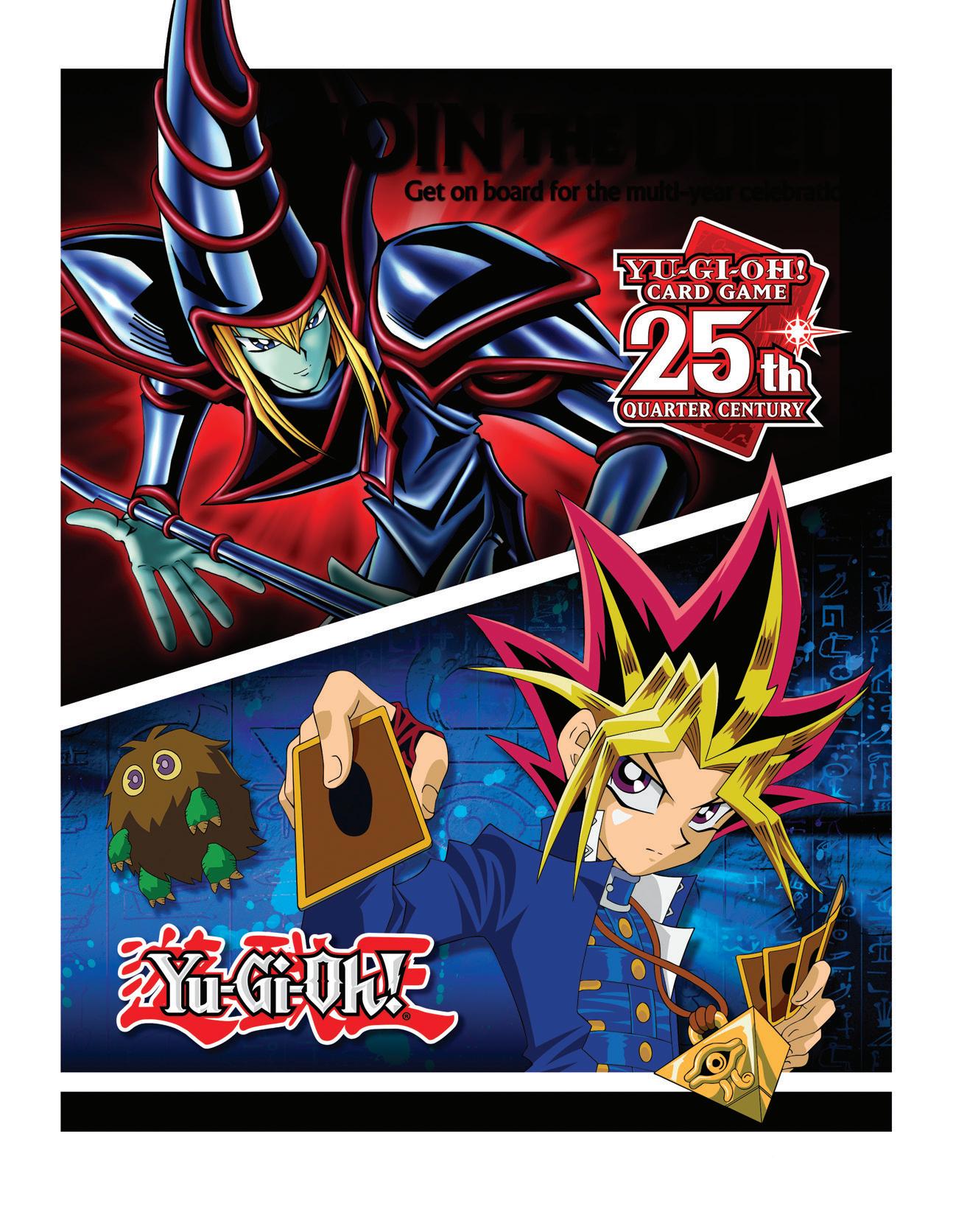
From the iconic Tamagotchi and Furby, to virtual NFT avatars, the toy industry is in the midst of an e-pet renaissance.
 BY: GARY RUSAK
BY: GARY RUSAK
lmost 25 million US households adopted a pet during the pandemic. And now, the pet industry in the US alone is generating an estimated US$280 billion every year. Like a rambunctious puppy, this growth is showing no signs of slowing down.
So it follows that toycos are introducing a pack of new digital pet offerings in the belief that the pandemic has reignited interest in this play category. “We have seen a resurgence in the last couple of years,” says Tara Badie, marketing director for Bandai Namco, makers of the iconic digital pet Tamagotchi. “At the end of the pandemic, we all wanted to nurture and take care of things, and I think this is a good way of doing it.”
Susan Cummings, CEO and co-founder of Petaverse—the company behind a new fully digital entry in the category—also sees a connection between COVID-19 lockdowns and the rise of interest in all things pet related. “We were all trapped in our houses,” she says. “I think that is at least some sort of impetus [as to] why these products are coming back.”
Doug Wadleigh, head of global toy brands at Spin Master, also cites the after-effects of the pandemic as a factor in the growing popularity of the nurturing play pattern. “I think it probably made people more empathetic,” he says. But he also sees another factor at play: “There is a lot of nostalgia for parents who want their kids to experience the same things they did when they were the same age.”
Entries into the digital and electronic pets marketplace are legion, with some of the biggest toycos getting in on the action. Spin Master is making a splash with the North American release of its handheld digital pet Bitzee this fall. At the same time, Hasbro is re-introducing its iconic Furby talking pet. Longtime category stalwart Tamagotchi launched its newest iteration this summer, while its longtime rival GigaPets is riding the same wave with new innovations and a focus on online and alternative retail channels. And the newest pet on the block is Petaverse’s tech-savvy virtual pet, which takes a multi-platform approach to the digital space while leveraging NFT, AR and VR technology. A battle royale is shaping up in the toy sector.

Spin Master’s Bitzee (pictured right), which has started rolling out and will reach full retail distribution this fall, uses high-rate LED lights to create a hologram-like image of a pet. The proprietary technology sets the product apart from other handheld units that use a more traditional digital display.
“We [take] the pet out from behind the screen and make you feel like it’s right there in front of you,” says Wadleigh. “It is brought to life in a way that an interactive pet has never been brought to life before.”
Each of the 15 Bitzee SKUs in the toyco’s AAA battery-powered line will retail for US$29.99. Users can poke and prod the digital pet projections with their fingers to coax a number of tricks and responses from them. And while Bitzee uses specialized technology, the aesthetic itself is fairly lo-fi—a key characteristic of the category, as demonstrated in the 8-bit displays of Tamagotchi and GigaPets, says Wadleigh.

“I was interested to see whether today’s kids—who have grown up with such amazing 3D computer-generated graphical design work—would react to an 8-bit design style,” says Wadleigh. “In fact, they loved it. They loved how they could interact with it.”
Continuing its traditional doll-focused approach to the category, Hasbro relaunched Furby in July to celebrate the brand’s 25th anniversary. The redesigned version (pictured left) “offers kids a middle ground between traditional toys and on-screen entertainment,” says Kristin McKay, VP and GM of Hasbro Fashion & Preschool. “This generation has a little bit of a new shape, a new fur-hawk, and the eyes have reverted back to the mechanical actions of the original.”
Retailing for US$69.99, Furby continues the classic play pattern it pioneered, using a unique language called Furbish to communicate. The toy leverages traditional doll play that is augmented through the interactive speech component, separating it from handheld or virtual competitors. This formula has proven to be successful over the last quarter-century—more than 58 million units have shipped since Furby’s initial launch in 1998.
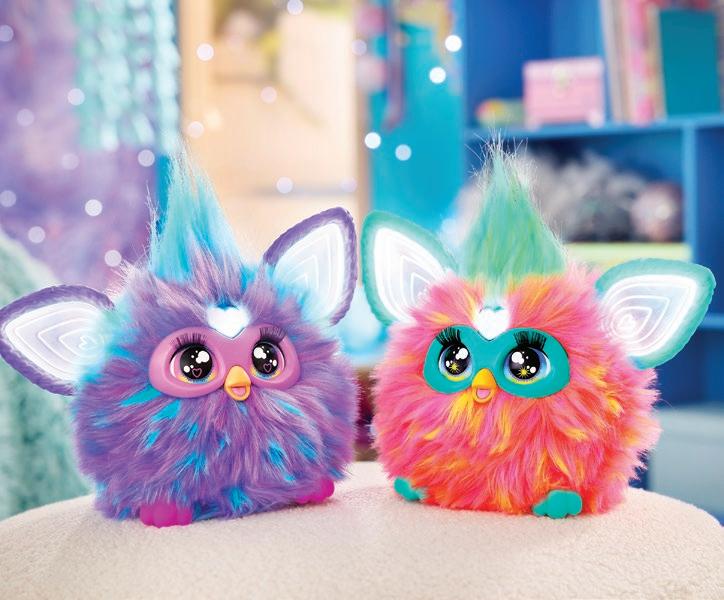
During the late ’90s, the first wave of digital pets and the handheld electronics that housed them migrated from Japan to North America and the rest of the world. Tamagotchi (pictured below), with its 8-bit display, was soon ubiquitous, and 90 million units have sold worldwide to date—including successful relaunches in 2014/2015 and 2019.
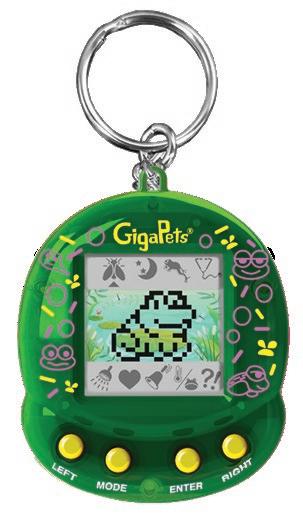
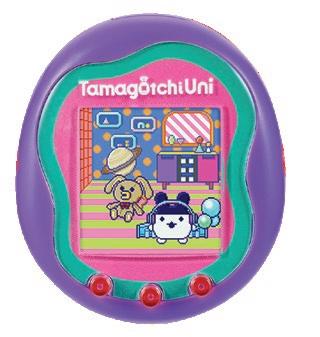
Bandai recently released its newest version, Uni. This revamped Tamagotchi retails for US$59.99 and is built around the same basic play patterns (feeding, bathing, obligatory bathroom shenanigans). But it also now boasts a color screen; rechargeable batteries; games and Easter eggs that constantly update; wearability; and access to see other Tamagotchis in 34 different countries through the newly unveiled Tamaverse. When that play mode is selected, the Tamagotchi itself will put on a VR headset to enter the new environment. There’s even a “Tama travel” option to explore exotic locations and collect souvenirs.
“[For the first time], you can also compete in mini-games with characters in different parts of the world,” says Bandai’s Badie. But for safety reasons, the unit does not connect to the internet, she adds.
Not to be outdone, Tamagotchi’s longstanding competitor GigaPets has timed another one of its relaunches to capitalize on the growth in the category in general—and the reintroduction of Tamagotchi, in particular. The 8-bit handheld device (pictured above), which retails for around US$17.99, includes a suite of new games and fresh tricks. Six pets are currently available at American casual dining chain Cracker Barrel Old Country Store and smaller independent toy stores, as well as online through Amazon.

“The content of GigaPets is quite different from Tamagotchi,” explains Steve Rehkemper, president of Top Secret Toys. “The foundational activities of feeding, cleaning and taking it to the doctor are still there. But we have tried to introduce humor and pop culture into it. For example, if you take your dinosaur to the doctor, it will eat him!”
London-based Petaverse is taking a different approach to the digital and virtual pet market, with a tech-heavy offering that will be able to traverse multiple platforms.
Leveraging decades of game development experience, Petaverse creates pets (pictured above) that “break the confines of just being trapped in one experience or one game,” says Susan Cummings, the company’s CEO and co-founder. Launching this fall, users can go to petaverse.com and design a digital NFT avatar pet free of charge to be their digital companion in a bevy of mini-games.
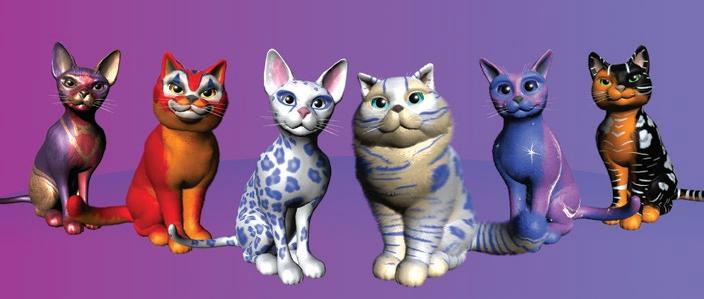
“The mini-games are how you fulfill the needs of your pets, but you can also bring that same digital pet to AR or phones or VR glasses,” says Cummings. “You can put them on your Twitch stream and beyond.” (In fact, as Cummings was explaining the product during our interview over Zoom, her pet avatar—a grey and surprisingly life-like digital cat—wandered onto the screen behind her, proffering distinctly feline half-curious looks from the background.)
Petaverse will be built around a subscription revenue model, in which users will pay for each extension for their NFT companion. A slew of partnerships are currently in the works, including collaborations with Apple’s Vision Pro platform and Qualcomm’s Snapdragon AR platform.
Cummings sees endless possibilities for virtual pets. “Imagine a future where the whole family is wearing digital glasses…your pet is off playing with your kids in the other room, and then it will come and tell you when it’s hungry.”
The technology is already in place that will entirely transform the robust pet industry, she adds. “It will be seamless, and that is what we want. We are really looking to blur that line.”
Executives from Warner Bros. Discovery, Magic Light Pictures and Kids Industries explain how licensed walking trails can lead to powerful brand-building experiences.
BY: COLE WATSONhe thrills offered by theme parks and resorts are undeniable, but these luxury getaways come at a hefty cost that many consumers simply can’t afford these days. In July 2022, the index of all goods and services in the US rose by 5.9%, and jumps in inflation
and cost of living are being felt worldwide. However, kids and families are still hungry for live experiences; they’re just on the hunt for more budget-friendly options. And that makes it the perfect time to suggest simply going for a walk.
Trail experiences encourage adventurers to explore a curated walking path where they can engage with a range of attractions, character statues and interactive apps. These affordable location-based offerings can be built in a variety of environments (zoos, parks and even city streets), and they’re ideal for creating photo opps that guests can’t resist sharing on social media. This is especially true for IP-based trails.
More and more licensed trails are popping up around the world, with players like Warner Bros. Discovery (Harry Potter) and the UK’s Magic Light Pictures (The Gruffalo) paving the way with some of the largest brands in their portfolios.
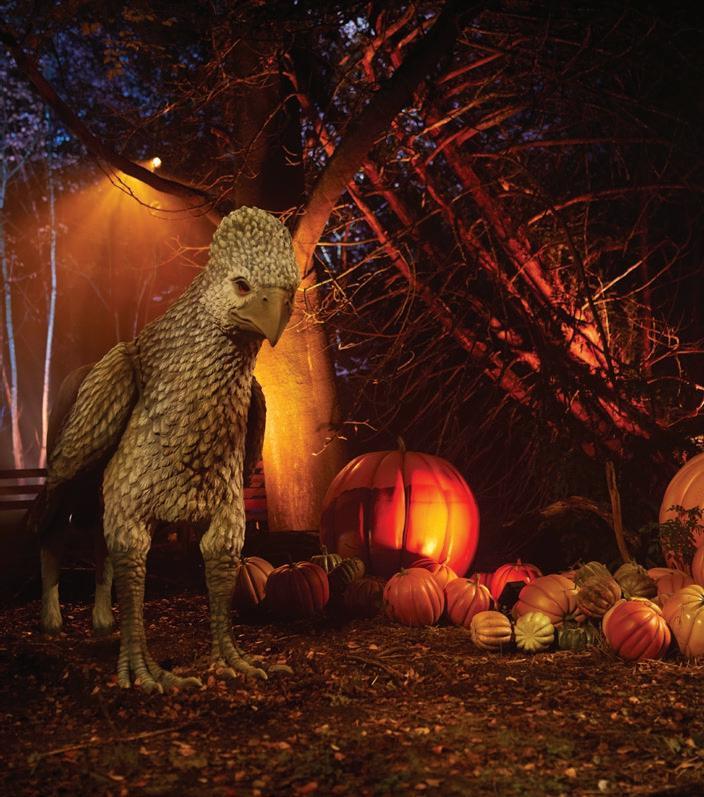
In June, UK-based Aardman Animations and advertising agency Kids Industries partnered with wheelchair charity Whizz Kidz to launch Morph’s Epic Art Adventure. This trail featured more than 50 life-size sculptures of Aardman’s Morph character, each one designed and painted by a local artist. The statues were then set up around the city of London to raise awareness for the needs of young wheelchair users. Families could find them near several of the city’s iconic landmarks, including St. Paul’s Cathedral, the Tate Modern art gallery, the Tower of London and the historic Borough Market.
“Morph’s Epic Art Adventure was designed as a trail from the outset,” explains Gary Pope, CEO and co-founder of Kids Industries. “We partnered with a company called Wild in Art that supports various charities in building these art trails, but there had never been a fully accessible one before.”
It took close to two years to bring the project to life, notes Pope. Kids Industries created the art trail’s advertising, communications and interactive map, all of which invited visitors to follow a step-free path around London to discover all of the Morph statues. Once found, each statue unlocked fun facts and rewards in the app.
About 12 million people experienced the trail during its 62-day run, according to Kids Industries. Visitors who downloaded the app collected 371,749 Morphs and uploaded 5,444 images and selfies with the statues.
On the heels of this success, Kids Industries is interested in developing more art trails in the future, and Pope says the plan will be to keep working primarily with charities and nonprofits in order to do the most good.






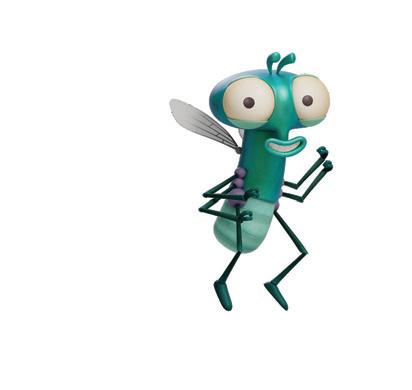



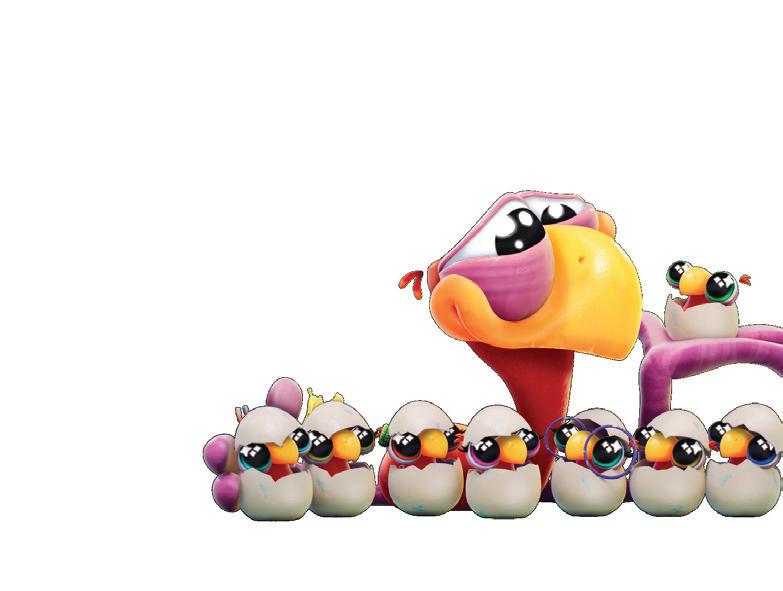
“There’s no question in my mind that trails have massive brand-building power, and if you play your cards right, they can actually be a revenue generator as well, because people want these experiences now,” Pope says. “A lot of it hinges on having the right IP, and placing it in the correct setting to build a meaningful connection with the consumer.”
For Magic Light Pictures, forging that meaningful connection involved placing 12 wooden sculptures based on its flagship IP The Gruffalo in several woodlands across the UK, including Salcey Forest, Sherwood Pines and Whinlatter Forest. Its Gruffalo Orienteering Courses, which Magic Light began developing in 2010, challenge kids and families to uncover each statue as fast as possible, using the map provided for each course.
“The values of nature are deeply rooted in the Gruffalo books created by Julia Donaldson and Axel Scheffler,” says Magic Light marketing director Marc Ollington, who adds that the trails let families go beyond reading the books, watching the film and engaging with the toys to absorb those outdoor values first-hand. “Kids have this big desire to experience the wider world around them and engage with nature daily.”
All of Magic Light’s Gruffalo trails are free for the public to enjoy, and they attract a steady stream of visitors each year—ranging from families to classrooms of kids heading out to the woods for a school trip. While the trails themselves aren’t monetized and don’t directly promote any merch, Ollington says the brand engagement experience they create increases audience awareness and motivates users to purchase licensed consumer products at retail later on.
In order to create a suitably memorable experience, Magic Light needed a partner that understood the UK’s forests inside and out. “We work with Forestry England, and they do an enormous amount of lifting,” notes Ollington. “They’ve developed a lot of the materials we use.”
A new trail takes about nine months from concept to completion, he adds. “It’s an investment that comes from our partners in terms of design, installation and maintenance to run the trail, but it’s also an investment that we make in finding the real estate and tasking our teams with imagining new touchpoints for the experience.”
In 2017, Magic Light developed and launched an augmented reality app called
The Gruffalo Spotter. By scanning designated markers along the trail with a smartphone, kids can see the book’s characters come to life on their screens and take pictures with them.

Within a year of rolling out, the app was downloaded more than 400,000 times, and it helped the trails reach 1.5 million total visits by 2018, according to Ollington.
“People want photo moments at live attractions, and the AR app has really helped with that,” he says. “Working out how to get valuable social media engagement built into the trail and other experiences is really important. We’re always thinking about how technology can be used now, from the best way of incorporating it to whether it’s even appropriate for a specific section of the experience.”
Magic Light is already well into the development of its next set of trails for 2024, and the in-house team is planning new sites in Scotland and Wales. The company has also received a fair bit of international interest, leveraging that into licensing deals for new trails based on brands including Pip and Posy, Room on the Broom and The Snail and the Whale, to be located in an Italian woodland park and several sites across Australia. However, this kind of expansion can present a new set of challenges.
“In some countries, the management of forests is less unified,” says Ollington. “This can make it harder to engage or find new partners in each market. One of the reasons
trails work particularly well in the UK is that there is a strong desire [from the government] to engage with families and try to get them to explore the great outdoors.”
Sustainability is another key objective for this experiential licensing category, adds Peter van Roden, Warner Bros. Discovery’s SVP of themed entertainment. “We go through a number of ecological sign-offs to ensure the trails—including the trees and wildlife—are treated with the utmost respect,” he says. “This can lead to the necessity of shifting a path to avoid things like vulnerable tree roots or even a family of bats.”
WBD started its journey into the trails market with the launch of Harry Potter: A Forbidden Forest Experience in the UK two years ago. And the experience has since rolled out to new locations in Belgium and the US (Virginia and New York).
The Forbidden Forest Experience takes visitors through an illuminated night-time forest set, where they encounter several beasts from the Wizarding World and learn to cast spells using their wands. WBD has also cooked up some additional on-site monetization opportunities, including themed food & beverage offerings and exclusive Harry Potter merchandise for kids.
“The Forbidden Forest Experience is a way to extend the storytelling of one of the most [iconic franchises in modern entertainment],” says van Roden. “It allows guests to physically interact in a space that they have previously only seen on the big screen or read about in a book. To that end, experiences are always a great way to reach a broader audience.”
Despite the starting ticket price of US$48, families were more than willing to take a ramble down WBD’s trail. Between October 2022 and January 2023, more than 620,000 guests experienced the Forbidden Forest across all of its locations. And Harry Potter fans around the world are asking (through social media) for their city to be one of the experience’s next stops, says van Roden.
Despite the smaller scale of these experiences, trails show that IP owners don’t have to build huge theme parks and resorts to get large crowds and families through the door. The most important part of any LBE experience is to ensure that the IP is placed in a fitting setting and creates long-lasting memories to build up valuable brand affinity with its core consumers.

Educational video games are becoming a hot market for kidcos looking to bring their IPs to new platforms at home and in school through acquisitions, partnerships and licensing.
BY: COLE WATSONkids start using smartphones and tablets at younger and younger ages these days, both teachers and parents are having to compete with screens to keep them engaged with learning at school and at home. One way to do this is by employing digital learning methods including educational games and AR technologies that teach foundational skills in math, English, music and science.
The widespread adoption of e-learning and tablet-based education has created a global market ripe for growth as both evergreen brand owners and emerging kids IPs jump into the highly lucrative gaming business. Kids educational games, in particular, generated US$4.19 billion in revenue last year, according

to a report published in September by market consulting firm Kings Research. And as demand rises, this market is projected to grow by 22.59% year over year until it reaches US$20.5 billion in annual revenue by 2030.
Kids entertainment companies have several market-entry choices, from making games internally, to acquiring a studio, to licensing their IP to an experienced developer already working in the field.
To help bring Angry Birds into the classroom, Finnish video game developer Rovio Entertainment partnered with US-based Legends of Learning to create a series of
STEM-focused games using settings and characters from the iconic franchise.
Angry Birds is naturally suited to the digital education market because its gameplay—which involves slingshotting characters into buildings and evil pigs—was already built around common educational subjects like physics, measurements and angles, says Katri Chacona, Rovio’s director of brand licensing.
The partnership has resulted in a game due out this fall that also taps into two major trends in education, adds Vadim Polikov, Legends of Learning’s CEO. “Teachers and administrators have realized that today’s students are used to a much faster-paced,


interactive and engaging world outside of school, and they expect that same rich experience at school as well,” he explains. “Teachers are now turning to learning games to supplement the traditional textbook curriculum, and students are responding with increased engagement and higher test scores. Second, many parents decided that they were going to take a more proactive role in their children’s education [during the pandemic], and that often led them to educational games that could engage their kids and supplement their learning.”
Legends of Learning’s primary platforms are Chromebook laptops and online browsers, which are the most widely accessible hardware for teachers in schools, notes Polikov. “While this limits the types of games that can be built, it massively broadens their reach and allows us to make a real impact on learning in schools today.”
More than a million monthly users play games through the Legends of Learning platform, which features a catalogue of more than 2,000 instructional titles and videos. And online games like the ones curated by Legends hold the largest market share at 62% as of 2022, according to the King Research report.
In Spin Master’s case, purchasing an experienced developer and its gaming library was the strongest move to make. The Canadian toyco has worked with several games studios, including Activision and Outright Games, but only its San Francisco-based mobile app developer Originator specializes in educational titles.
Spin Master acquired Originator in 2021 for US$29 million in order to create new branded e-learning games and apps for its kids IPs, says studio co-founder and CEO Rex Ishibashi. Originator launched PAW Patrol Academy the preschool franchise’s first e-learning app—in tandem with feature film PAW Patrol: The Mighty in September 2023. Originator initially rolled out an Englishlanguage version of the game to app stores worldwide, so that kids from ESL countries such as China, Germany and France could try out the experience. The company plans to update the game with new languages later on to bring in more players, says Ishibashi, adding that Originator’s previous titles have had success using this strategy.
“From our internal research, 94% of kids ages two through 12 are playing digital games
globally,” says Ishibashi. “The core audience for e-learning games is three- to six-yearolds, and while they’re only a couple of years apart, there’s a lot of development happening during that time, whether it’s letters, words, numbers or shapes.”
Since launching in 2013, Originator’s games have logged more than four billion hours of playtime among 10 million-plus users. And math and English are the most in-demand subjects, according to Ishibashi.
Although it’s not a dedicated e-learning studio, San Jose-based Nex started developing and manufacturing a new active entertainment system for TVs called Nex Playground
after seeing demand for more casual and interactive gaming experiences from families.
The hardware will launch in December with more than 20 games and experiences for kids that use motion-tracking technology, including Nex’s original Active Arcade mini-game collection and its first licensed title, Peppa Pig: Jump and Giggle. Several of Playground’s games feature educational components such as algebra and puzzles to help teach kids problem-solving skills through movement.
“Productive playtime, like educational and developmental play, will be a big cluster of the content that we want to create going forward,” says Nex CEO and co-founder David Lee. “Not only are we creating games internally, but now we’re seeing interest from companies and IP owners in the kids space— like Hasbro, which wants to bring its brands to our platform.”
Lee notes that it has taken nearly five years for motion-tracking tech to get to a stage where the camera can track multiple users at once, and for manufacturing efficiencies to allow the game console to be to be sold at consumer-friendly prices.
During the December launch, Nex will roll out its Playground systems in four key markets first, before expanding into new territories later next year. “We are going to market first in the US, Hong Kong, Taiwan and South Africa,” says Lee. “We want to start in Hong Kong and Taiwan since that’s where our previous apps went viral. And retailers are already placing orders for the hardware because it serves a need for safe indoor activities at home.”
A similar demand for educational kids games is brewing in Asian territories, adds Kings Research. Last year, the APAC region accounted for 45.72% of revenue in the online education market, with rising populations in countries like India and China acting as key drivers of growth. Kings expects this market share to grow by 25.19% year over year until 2030 as more parents seek out accessible education tools for their children.
When it comes to developing e-learning games for kids, Lee, Ishibashi and Palikov all agree that striking a balance between entertainment and education is the key to success. The toughest challenge is ultimately making a game engaging and fun enough to replay for multiple sessions—because an educational app is next to worthless if the child doesn’t want to play it.
THE CATEGORY IS EXPECTED TO GROW 22.59% ANNUALLY and reach US$20.5 billion BY THE YEAR 2030
The APAC region made up 45.72% of online education revenue last year
94% OF KIDS ages two to 12 are playing digital games globally
KIDS EDUCATIONAL GAMES GENERATED US$4.19 billion last year


no secret that influencers are hugely popular with kids. In 2019, 28% of eight- to 12-year-olds who participated in a global survey conducted by The Harris Poll and The LEGO Group said they wanted to be YouTubers when they grow up. And in the US, more than half (54%) of 13- to 38-yearolds said they would become influencers if they could, according to another 2019 study from research firm Morning Consult.
Smelling an opportunity for brand expansion in all of this aspirational popularity, some kidcos are starting to position their animated characters as “virtual influencers” who function just like the real thing—and it’s already paying off in measurable results.


In June 2023, French studio Millimages launched a YouTube-first series called Molang & Piu Piu YouTubers (26 x 10 minutes) that sees the bunny-and-chick duo making influencer-type videos in which they play video games, make ASMR sounds and answer questions from fans. It was budgeted at US$1 million, and took just eight months to produce.

A strong audience response to the first batch of episodes—which have generated more than six million views and 65,000 new subscribers for the show’s YouTube channel— has motivated Millimages to start planning a second season, says head of digital content strategy Kévin Maintrot. The studio is also looking to sell the series to traditional TV buyers and SVODs.
Millimages identified that Molang fans tend to associate the brand with gaming, anime and K-pop, so it brought all of these elements into the new episodes, which will roll out in December 2023.
BY: RYAN TUCHOWStorylines where the characters play video games seem to resonate the best, says Maintrot. But other influencer tropes the company is exploring for future content include personality tests, makeup videos and “try not to laugh” challenges in which the characters attempt to keep straight faces while watching funny clips.
Millimages had previously used YouTube primarily for sharing show clips and compilations, but when the reach of its Molang Cartoon channel hit more than 1.4 million subscribers, the timing seemed perfect to launch this new original series there, says Maintrot.
Molang & Piu Piu YouTubers is “blurring the line between animation and IRL,” he adds.
Turning animated characters into influencers is working wonders for creators looking to springboard their brands into fandoms.
“We have the opportunity to do collabs with other brands and sponsored content, and our goal is to gain 100,000 new channel subscribers by the end of the year.”
On the other end of the spectrum, LA’s Invisible Universe is taking a polar-opposite approach to developing virtual influencers. Its model is all about building its characters into stars on social media first, and then turning them into franchises.
The studio has successfully followed this blueprint to build an audience for characters such as Qai Qai (4.5 million TikTok followers)—a baby based on a doll belonging to tennis star Serena Williams’ daughter. And Grammy-winning songwriting duo Benj Pasek and Justin Paul created the character Ember (1.7 million TikTok followers)—a teen whose dad is the leader of a hellscape—in partnership with Invisible Universe, which also owns wholly original character brands like Lovie, a preschool IP with more than 200,000 YouTube subscribers.
Now the company is ready to parlay these fandoms into new series, books and licensing deals.
In its videos, Invisible Universe’s characters answer questions from fans, talk about their lives and react to other creators’ videos. The studio can produce one- to two-minute influencer-style animated videos (with simple backgrounds and one character talking to the camera) in just two or three days, notes CEO Tricia Biggio. This helps its characters stay current and on top of the newest trends—which is the key to success in the world of influencers, she adds.
Now that it has built broad awareness for its character-driven brands across social media, Invisible Universe plans to use US$12 million raised in a funding round last year to move them beyond the world of influencers. To that end, it signed Segal Licensing as its first North American licensing agent in June.
The goal is to look at opportunities in television, consumer products, publishing and beyond. Invisible is currently developing and pitching a long-form Ember TV concept and chapter book series (both targeted at tween/teen girls), and in August it launched a YouTube series called Dance with Qai Qai, in which the character teaches kids how to groove. This new series is a prime example of how the company is monetizing brands
as it works to expand them into every category on the franchise flywheel, says Biggio.
Children’s television icons like Mister Rogers and Dora the Explorer have been breaking the fourth wall between kids and characters for decades by asking children questions on screen. But the next evolution of this dynamic is AI-powered characters who can actually hear what kids say and respond back, says Sonia Tiwari, a researcher at Penn State University who is focused on virtual influencers.
Embracing the intersecting trends of virtual influencers, AI and personalized content, California’s Inworld operates a platform where kids and brand owners alike can build chatbots capable of responding to both text inputs and kids’ voices, leading to more personal interactions.
The techco has already worked with Pokémon GO developer Niantic and South Korean telecom LG U+, and the educational characters they created together can be shared off-platform in their own channels and products, as well as integrated into kid-favorite hubs such as Roblox and Minecraft.

Inworld lets kids make their own characters free of charge—but it also offers a
tech-supported enterprise tier that costs US$5,000 a month.
Clients of this service are largely using Inworld’s tools to make interactive video game characters, brand mascots and games. And the company is very keen to work with kids brand owners looking to add some interactivity to their characters, says marketing VP Monica Tran.
One company that is particularly interested in this approach is Disney, which selected Inworld for its accelerator program in 2022 to explore how the tech could be used in Disney’s storytelling. This experimentation yielded an online game prototype called Droid Maker, in which kids can make their own animated droids, ask them about Star Wars lore, and hear their thoughts on Disney’s galaxy far, far away. The media conglom is also developing an AI personality for Disney Star’s Indian metaverse platform Starverse, where kids can explore a 3D world that centers around sports.
“What we’re doing is creating characters with personality that have animation, and that feel like they’re part of the brand they represent,” says Tran. “Connecting with characters like these is an immersive and interactive experience that turns kids into co-creators and helps them form a deeper connection with the brands.”
otion capture, or mocap, has long been heralded as a solution for producers’ two biggest challenges—constraints on cost and time. But the tech’s uptake has been slow because, at least initially, the bulky motion-capture suits (those dark outfits that are sometimes covered with dots), high-priced software and slow rendering processes made it expensive and complicated.
Even today, mocap hasn’t fully shed its reputation as an enigmatic and prohibitively expensive process. As a result, it’s still alien to a lot of producers who are used to animating 52 x 11-minute shows in more traditional ways.
studios and apps on smartphones that can turn live-action footage into animation, mocap is booming. And kids content producers are starting to embrace the tech, finding ways to make mocap their own and developing new projects that lean into its strengths.
Mocap is helping studios deliver content quickly—an especially critical capability when it comes to capturing the attention of digital audiences before they move on to the next IP. How quickly, you ask?
BY: RYAN TUCHOWBut thanks to inexpensive licensed software, a surge in new motion-capture
Australian mocap studio Fika Entertainment (Teletubbies Let’s Go!, PJ Masks in Real Life) was able to produce 300 minutes of finished animation in just 12 months with a team of less than 50 people, says CEO
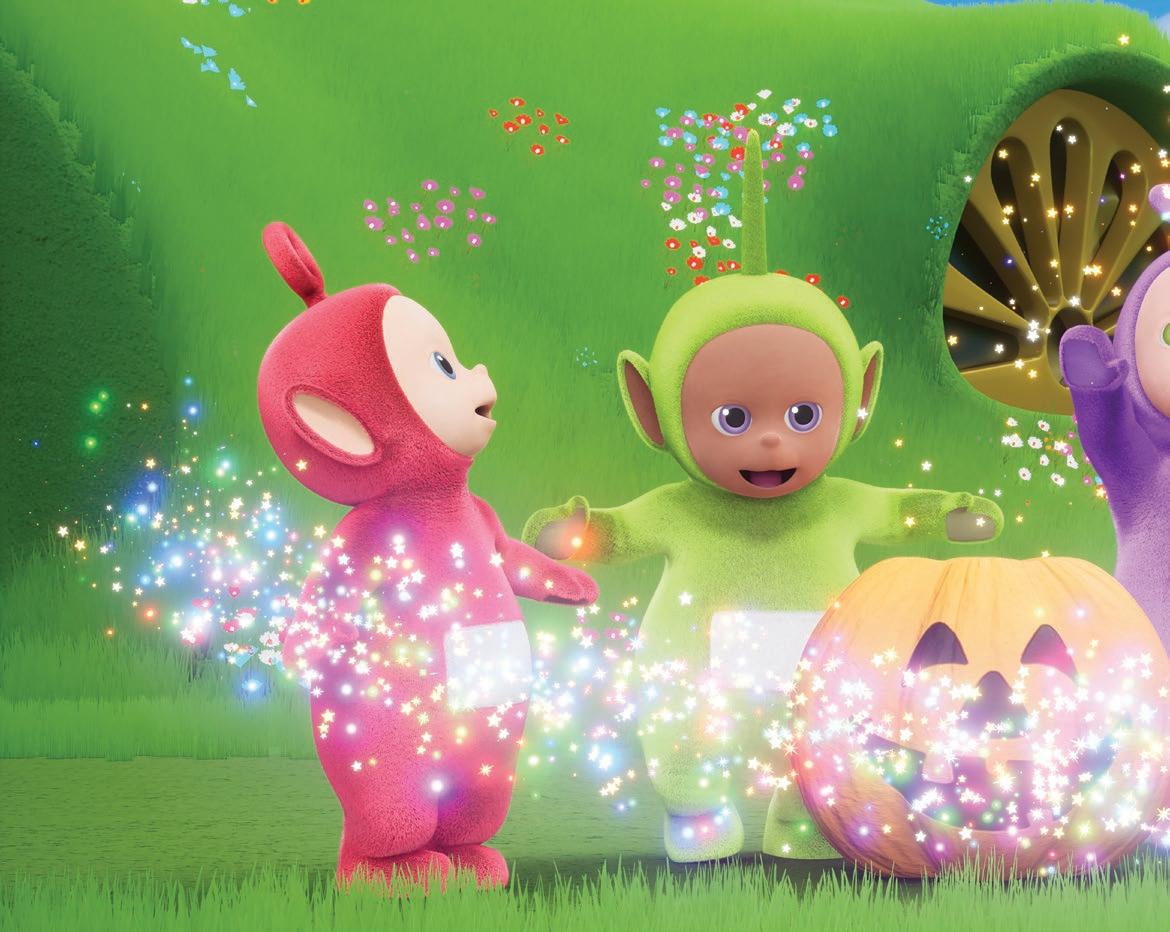
As demand for digital content grows and pressure on budgets mounts, motion capture’s production benefits are attracting more kidcos.
Jordan Beth Vincent. (To put that in perspective, hundreds of animators could typically spend 18 to 24 months on 572 minutes of a traditionally produced 52 x 11-minute series).
Poland’s Platige Image (The Witcher), which opened its own mocap studio in March, has seen the impact of developments in motion-tracking systems, animation software and cameras on speeding up the back end of mocap work. And the tech’s cost has also come down to the point where talent can sometimes be the most expensive part of a shoot, says Elźbieta Trosińska, a motion-capture producer at the studio.
The quality of work a producer can get from mocap has improved so much that characters have a realistic feel, which can be
difficult to achieve in traditional animation, says Halle Stanford, president of television for The Jim Henson Company, which has been working with mocap tech for about 20 years. Famous for its iconic Muppets, Henson sees a lot of similarities between its early puppetry work and what it’s doing these days with mocap. In the past, it built hand-crafted characters that puppeteers brought to life; it’s doing much the same thing now, but with the high-tech twist of using computers to turn performances into finished animation.
Stanford says Henson has identified two underrated uses for the tech: capturing movement (especially dance) and creating characters that can really resonate with kids.
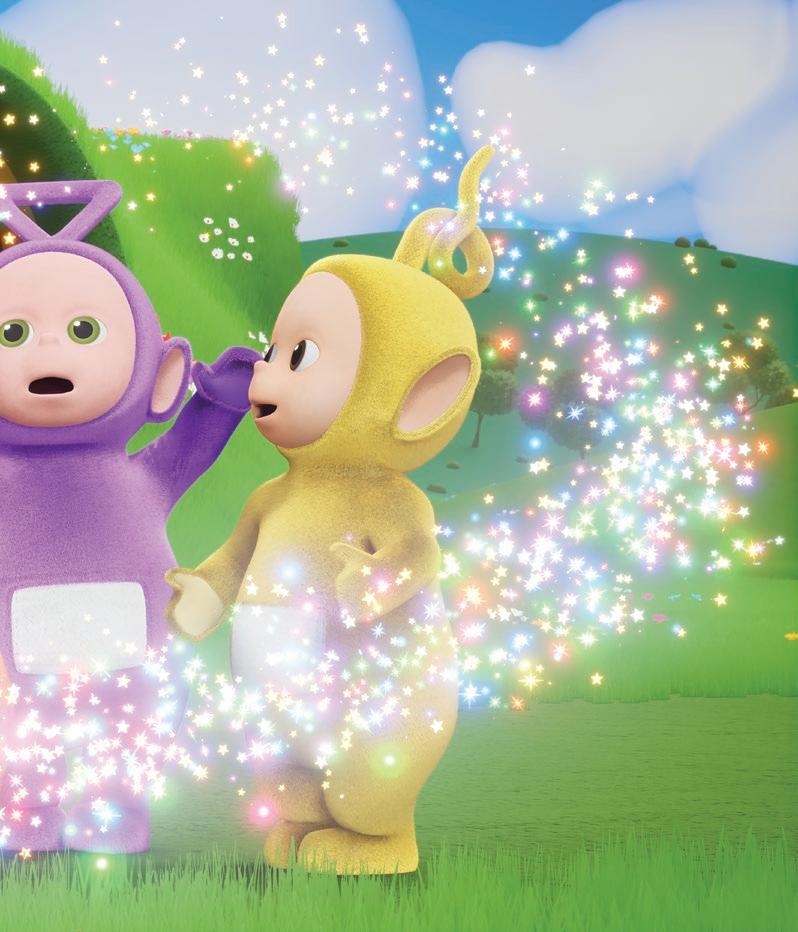
And the studio is in the process of developing two new preschool shows that lean into these strengths.
In Monster Jam—created by veteran puppeteer John Tartaglia (Sesame Street) and former Nickelodeon exec Russell Hicks (SpongeBob SquarePants)—monsters of all shapes and sizes dance on screen and encourage kids to get up and be active. And Dani Can Dance from Alex Rockwell (Word Party) centers around a young girl who learns different styles of dance in each episode, ranging from ballet to Bollywood.
“The style of movement and dance, where it looks real, gives these shows an aspirational feel [that inspires kids] to get moving, and that’s something we couldn’t capture in traditional animation,” says Stanford. In Dani Can Dance, mocap makes it easy to change the sets so Dani can be dancing anywhere. This opens up the world of the show in a way that wouldn’t be possible without expensive animation, or traveling to different locations in the case of live action.
Henson has its own proprietary hardware called the Henson Digital Performance System, through which performers’ motions are captured and used to move animated characters in real time. Combined with other animation tools like Epic Games’ Unreal Engine, Henson’s performers can see a rendered, almost-finished version of what the animation will look like on the monitor while they’re puppeteering.
Today’s mocap characters are more polished and can be pretty much fully rendered right away, which leads to shorter post times, says Stanford, adding that the tech has developed to the point where the company could even have its characters do live interviews. And mocap characters, with their tactile look and realistic movements, appeal to audiences across generations in the same way that puppets can.
Beyond mocap’s improved quality, the speed at which it can produce content is a major reason why it’s now becoming a critical tool for producers. The demand for animation has been steadily speeding up, due in large part to audiences who are used to YouTube delivering content to them constantly. But animation production has not kept pace, says Tom Box, co-founder of Blue Zoo Animation in the UK.
To satisfy that appetite, Blue Zoo is developing its own motion-capture hardware and
software called MoPo, which doesn’t require suits and lets animators quickly animate new content for digital distribution. With MoPo, an animator can don a VR headset and use handheld controllers to puppeteer a character layer by animated layer. They can move any part of the character and then see exactly what it looks like on the monitor—in real time, thanks to Unreal Engine—before moving on to the next part of the character. Epic Games gave Blue Zoo a grant in April to develop MoPo, and the studio is already having a lot of success with it.
Significantly, a creator can animate one minute of content per day with MoPo, while it can take a few weeks to produce that much using traditional CG-animation tools, says Box.
In recent months, Blue Zoo has been busy building use-cases for the technology. It’s producing 12 one- to two-minute episodes of the comedy series Silly Duck for its Little Zoo YouTube channel (414,000 subscribers), highlighting a man’s attempts to do everyday things (like boarding a bus or cooking) with a duck sidekick who is always getting him into ridiculous kinds of trouble. Released back in January, the first episode alone has racked up more than 600,000 views on YouTube, and
the series as a whole has netted upwards of 1.3 million views. This popularity illustrates that there’s a demand for simpler, less expensive animation that can be delivered to audiences fast, says Box.
In the long term, Blue Zoo’s goal is to license out its MoPo software for other companies to use. But that isn’t an overnight process, as it would require a team to support the product and manage licensing.
It’s early days for the tech, but the studio is developing new music-focused projects that are made specifically for MoPo and will launch on YouTube. And it’s also in discussions with studios and broadcasters about providing service work and animating third-party shows with the software.
“One person can do this work from home, instead of needing a team of multiple people,” says Box. “Kids also really embrace the low-fi, frenetic energy in the content you can make with mocap, and now we can use Unreal to render it so it looks more polished.”
While producers like the speed and quality of mocap, not all of them are after the puppeteered look that often comes with it. But one previous holdout, Vancouverbased Relish Studios (Barbie’s Dreamworld), is now embracing mocap because the tech

is proving to be much more versatile than it originally thought.
“Mocap has been said to be the silver bullet of the animation industry for 10 years, and animators hearing about it can be quick to greet it with healthy skepticism,” says Relish CEO Paul Pattison. “But what we’re finding now is that AI can make the animation more lifelike, and less clean-up work is required.”
In its new projects, the studio is exploring three different mocap techniques: full mocap suits; the app Move.AI (an AI-driven software on iPhones that can track movement and overlay it with animation); and licensed software from LA-based Wonder Dynamics that allows Relish to shoot regular live-action footage, then drag and drop elements onto the timeline during editing (the software will instantly make the real actor look like an animated character).
Developments like these make Pattison feel optimistic about mocap’s potential to help studios produce content faster and cheaper. But this big question remains: How far can the tech go in making quality animation that’s less expensive and with fast turnarounds? “Can we shoot animation the way live action gets shot? That’s going to be the real experiment.”
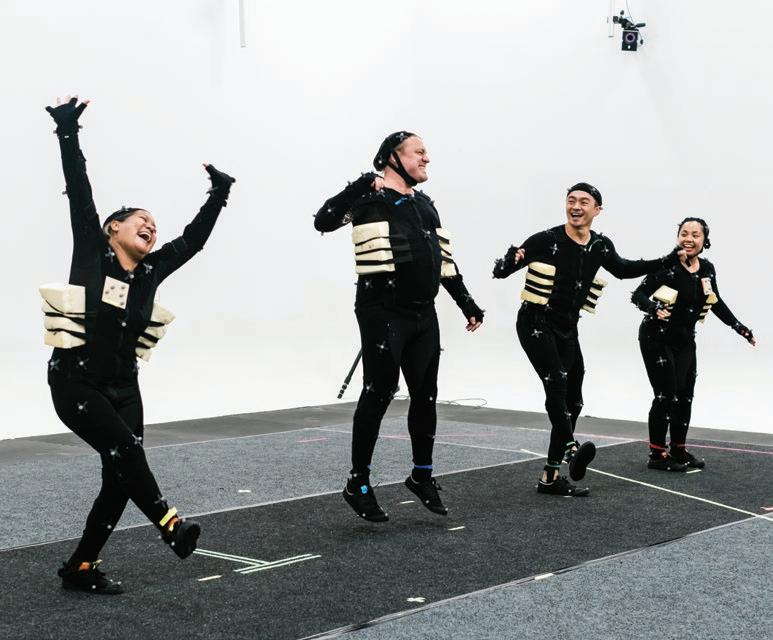 Fika Entertainment produced 300 minutes of finished animation in only a year using a small team of motion-capture performers and technicians
Fika Entertainment produced 300 minutes of finished animation in only a year using a small team of motion-capture performers and technicians
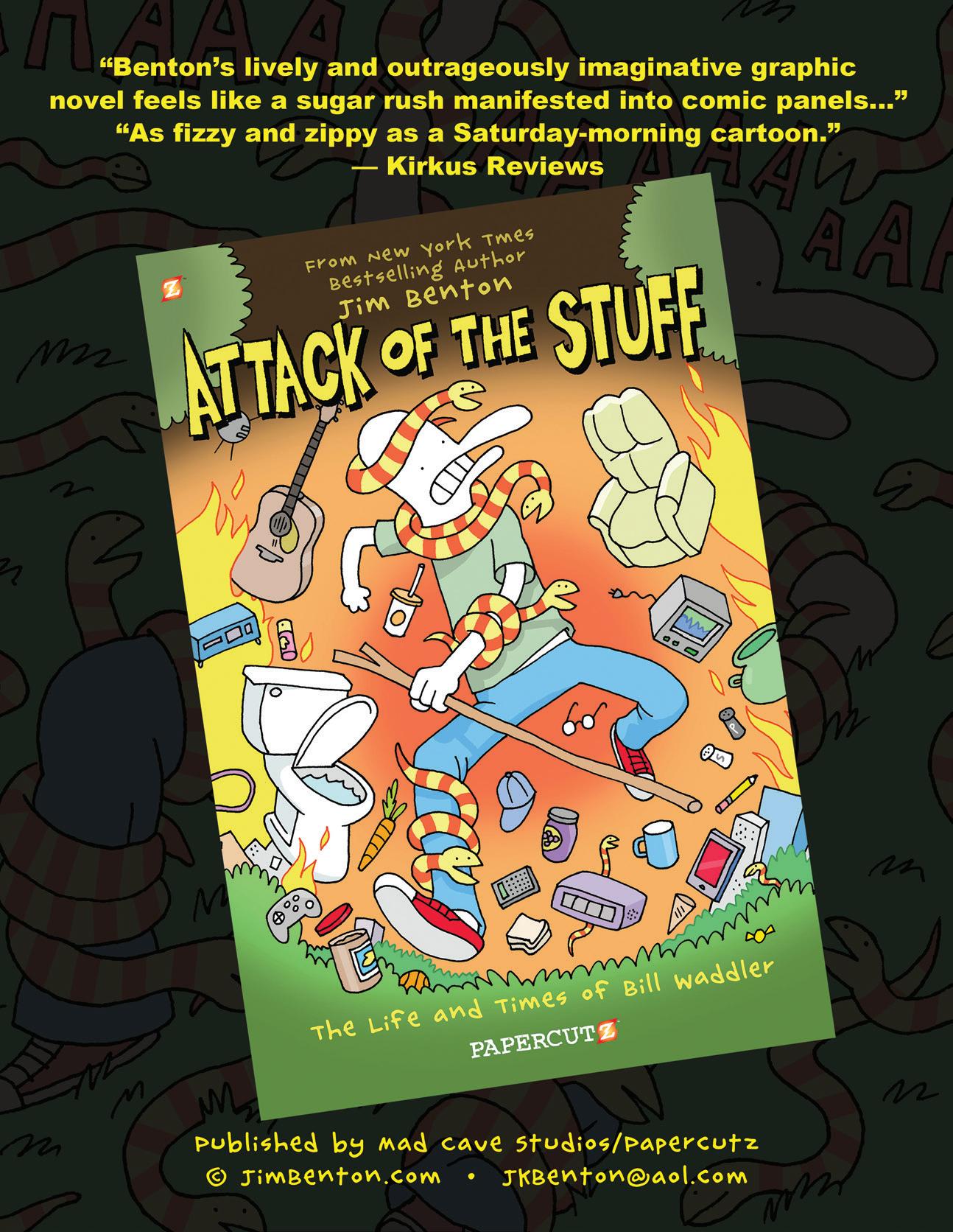

Kidscreen concludes its series on artificial intelligence in the children’s entertainment industry with a short film exercise.
BY: EVAN BAILY2016, filmmaker Oscar Sharp and creative technologist Ross Goodwin fed a stack of sci-fi screenplays into an AI, which generated a script for a short film titled Sunspring. Sharp then gathered a small cast and crew and shot it in one day. The screenplay is disjointed and confusing, but the film is a quirky master class in acting and directing, as director and cast imbue the nonsensical lines with subtext, meaning, comedy and emotion through performance, staging and camera. In the years since, generative AI has gone from exotic to mainstream. ChatGPT, which is much more complex than the model Goodwin and Sharp used, had 1.6 billion visits in June 2023, and parent company OpenAI has even more sophisticated language models up its sleeve. Runway AI, whose tools were used in the VFX pipeline for Everything Everywhere All At Once, just held its first annual AI Film Festival. And Thank You For Not Answering, a gorgeous short made with Runway’s Gen2 image-to-video tool, earned a glowing write-up in The New Yorker
With all of that in mind, I set out to make an animated short using AI for this column. What follows is a chronicle of what happened. If you want to dive deeper, the assets I created, plus my detailed notes and the finished short, are all archived in a Google Drive folder at bit.ly/47MEvdl.
To keep this project manageable, I decided that the short would consist of one simple gag: A MAN tells his (ordinary-looking) DOG to sit. Dog exits frame for a beat, then re-enters walking on two legs and carrying a chair. Dog places the chair on the floor and sits in it like a person. Tiny beat, then Dog crosses its legs like a human would. FIN.
To create the shots for the film, I resolved to try out Runway’s Gen1 and Gen2 video generation tools and pick whichever one was best for the project.
Gen1 is Runway’s video-to-video tool. Feed it footage plus a “style reference” image, and it re-renders the original shot to look like the image. Think of it as a souped-up Snapchat filter, or an off-the-shelf motion-capture setup that doesn’t require special equipment or rigged models.
After a little bit of testing (see Google Drive folder), I ruled out Gen1. It felt like I’d be making this too easy—I’d be able to shoot material with the actual composition, blocking and performance I wanted, and then just modify the appearance of the footage.
Gen2 is Runway’s text/image-to-video tool. Give it a text prompt and/or an image, and it renders a 4.5-second shot, which you can then extend up to three times.
EVAN BAILY is a TV/film producer and showrunner who also consults for entertainment, media, consumer products and tech companies. Please send feedback and ideas to ai@conbail.com.After some testing, I found that Gen2 wasn’t as reliable or consistent as Gen1. For example, given the prompt “camera cranes down from a high vantage point and finds a cute cartoon dog running through a field,” it returned a low-angle tracking shot of a cartoon dog floating/pulsing through a field. Not a slamdunk, but not a complete bust, either. I decided to give Gen2 a try.
Since Gen2 isn’t great at following text prompts (especially camera direction), I needed reference images to ensure continuity, consistent character models and proper shot hookups. I used Midjourney to generate images for Man and Dog, created a separate face for Man (since the full-body image of him was faceless), and comped them into a separately generated background to create a still of the master two-shot.
I tried feeding that reference image to Gen2 in conjunction with different text prompts, but it kept swapping the positions of Man and Dog, making Man face away from the (virtual) camera, and introducing other distracting elements. (Later, I figured out that Gen2 will actually adhere to a reference image, regardless of text prompt, if you make sure that the reference image rather than the text prompt is visible in the input window when you hit the “Generate” button.)
After trying multiple times to get Man and Dog properly positioned in the shot and Dog walking out of frame, I realized that Gen2 couldn’t pull it off. New plan: I’d render out individual components of the shot, starting with Dog turning around, and then comp them together. That’s where things started to really go sideways.
This time, Gen2 started with the reference image, but then it inexplicably cut away to another angle of the dog, which morphed into a headless four-legged monstrosity straight out of my childhood nightmares. When I tried to extend the shot to see what would happen next, Gen2 started the render, then informed me that the abomination it had created violated its content guidelines, and my account was at risk of being suspended. Cue the sad trombone.
This just wasn’t working. Would a different design for Dog help? Using Midjourney again, I generated some retro ’50s-style takes on Dog (pictured). Just to see what would happen, I fed a few of them into Gen2 without text prompts. Right away, I started seeing interesting results.
When I uploaded a pic of a dog sitting at a table, Gen2 made the camera crane up; the dog turned into a puppy and then into a teacup sitting in a saucer full of dog food; then a picture frame containing a human/dog hybrid wearing a frumpy dress appeared. It got even weirder from there.

And that’s when I realized I needed to stop fighting Gen2 and resenting it for what it does badly—and instead study what it does well and lean into that.
So I started generating more retro ’50s-style images featuring dogs and then letting Gen2 mess with them. The resulting shots were wonderfully surreal. You can see some of them, along with the final short, at bit.ly/3qyrbs0.
In retrospect, what I needed to do was right there in front of me all along. Sunspring embraces the inherent weirdness of AI-generated material, but weaves in human choices to create something that’s familiar and alien at the same time.
And when I went back and re-watched Thank You For Not Answering, I realized it was cut from the same cloth: morphing faces, bodiless heads, foreground objects merging into backgrounds, backgrounds calving off pieces of themselves into the foreground—and yet these surreal elements hold together as a film because of the way Trillo, the filmmaker, curated and assembled the footage and tied it together with the monologue that runs over the whole thing. In The New Yorker, Trillo says the AI was “co-directing” with him. Rather than fighting it, he embraced its strangeness but wrapped it in his humanity.
That’s my biggest takeaway here: Filmmaking isn’t technologyagnostic. What we make will always be inflected by how we make it. In the case of AI, rather than forcing it to do the stuff we’ve done in the past, I’m interested to see what effects we can achieve by guiding—but also embracing—its alienness.
Thanks for reading this! It’s the fourth and final installment in our limited AI series. I hope this and the other pieces were interesting and useful to you, and I’d love to hear any feedback you want to share (ai@conbail.com).
The resulting shots were wonderfully surreal.
entertainment industry.
The initiative is designed to connect 25 to 30 up-and-comers with experienced executives who can help them build meaningful relationships through networking.
Selected by our partner organizations, (which in the past have included Black N’ Animated, Rise Up Animation, LatinX in Animation and GLAAD) participants are grouped with industry mentors based on the area of work each one is interested in. Each small group will have three video calls in November/December to discuss career goals; plan, identify and develop leads for network-building; and review the mentee’s current projects.
The mentees will then be invited to attend Kidscreen Summit 2024 (February 4-7, San Diego), where they will have a private Speed Pitching opportunity to show their projects to potential investors.
Kidscreen’s Diverse Voices mentoring program is a unique opportunity for under-represented talent trying to break in and move up in the kids

On the back of box office record-breakers like Universal’s The Super Mario Bros. Movie and popular Netflix series such as Sonic Prime, a slew of production companies are developing new TV shows and films for kids and families based on video games right now. Has the historically disregarded video game adaptation actually turned a corner from a creative collaboration perspective to start delivering more bonafide hits?
BY: JEREMY DICKSONfter 30 years of mostly failed attempts to adapt video games as movies and TV series, the industry may have finally figured out a formula that works. Funnily enough, the so-called “curse” of the video game adaptation was arguably started and broken by the same IP—Nintendo’s Mario.

In 1993, Hollywood Pictures released Super Mario Bros. And though it was groundbreaking as the first-ever live-action movie based on a video game, the project was a massive commercial and critical disappointment, paving the way for a long line of underwhelming video game adaptations.
Nintendo’s iconic plumber returned to the big screen 30 years later, this time as the CG-animated protagonist of a movie that was much more faithful to the Mario games. These key changes paid off fast. To date, Universal’s The Super Mario Bros. Movie has raked in nearly US$1.4 billion at the global box office.
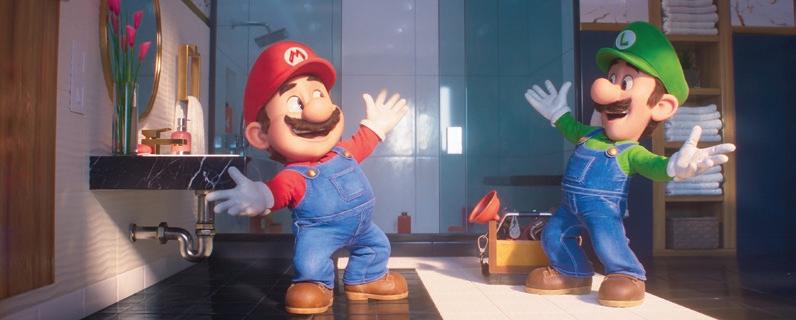
Its success, and the popularity of other recent projects including Netflix’s Emmy Award-winning animated TV series Arcane (based on Riot Games’ League of Legends) and Paramount’s live-action/animated Sonic movies, are changing buyers’ and viewers’ perceptions of video game adaptations— and actually bolstering demand for them.
So why are video game adaptations, especially animated ones, finally resonating with more mainstream audiences?
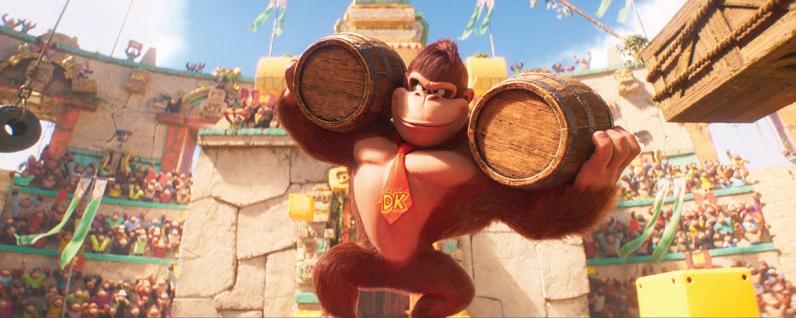
Jean Julien Baronnet, founder and CEO of LA-based Marla Studios (Talking Tom, Temtem) and producer of Netflix game adaptation Rabbids Invasion, attributes much of the new Mario movie’s success to the fact that it appeals to both longtime fans of the game and non-fans. “Not only is the movie good, the non-Mario fans actually want to play the game after watching it, even though the movie doesn’t serve as a marketing tool to promote the game,” says Baronnet.
And although The Super Mario Bros. Movie wasn’t forecast to be a massive hit based on past failures and the perhaps too-high expectations of fans, the fact that it did become a phenomenon isn’t that surprising, considering how much kids are
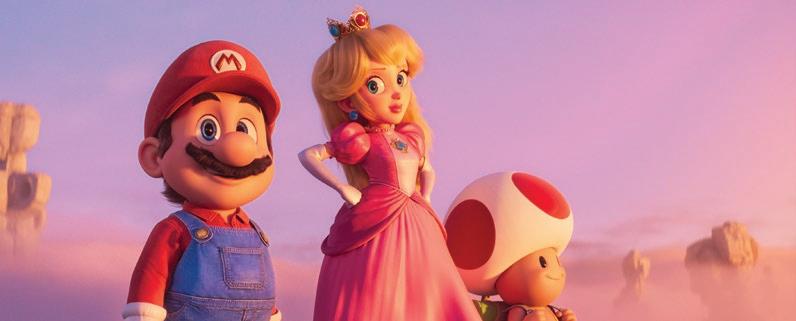
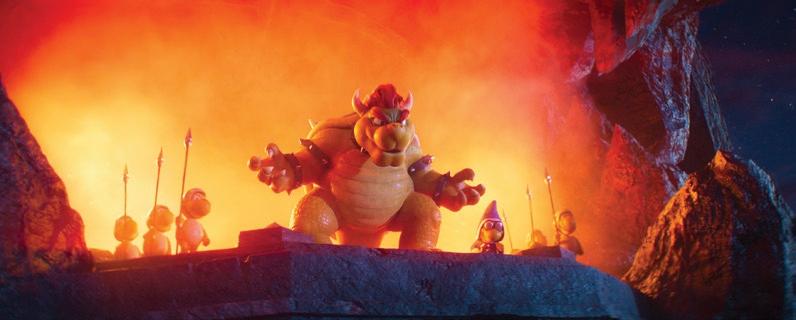
gaming with their families these days. This may also explain why overall demand for video game adaptations is growing.
According to UK-based research firm The Insights Family, family gaming is trending around the world. “Video games are now being seen as a way for kids to socialize,” says Rachel Bardill, SVP of marketing and product. “And socializing with friends and family is the number-one reason why kids are currently playing video games globally. Plus, gaming is now something that is increasingly a choice for parents.”
Adapting well-known, nostalgic gaming brands like Angry Birds—which appeals both to parents who grew up with the original game, and to their kids who are more familiar with newer iterations of the property—is often a sound strategy for producers looking to adapt video games, notes Bardill. “If you’ve got a proven format that you can exploit in the cinema, and then actually make a great film, that is a winning formula.” (Sony’s 2016 animated feature The Angry Birds Movie and 2019 sequel The Angry Birds Movie 2 collectively earned more than US$500 million globally on a combined budget of US$138 million, according to Box Office Mojo.)
Baronnet adds that buyers who may have been hesitant to invest in a video game adaptation in the past—due to factors such as the high cost of animation or the format’s poor
track record, for example—are now actively seeking out companies like Marla to find the next big hit. “Usually, we are [the ones] contacting the clients or even the streamers; but now the streamers are calling us and asking us what we have for IPs,” he says.
Owning big brands—particularly fantasy brands, which are dominating the adaptation space right now—is always advantageous. But if producers can’t afford to acquire or partner up for them, there are thousands of smaller gaming IPs in the market that could become hits, too, says Baronnet.
“Yes, most of the big IPs are fantasy. And because they are often cheaper to make in animation than live action/VFX, we’re seeing more of them. But fantasy today is low-hanging fruit. Looking at all the projects we’re working on, and the ones I’m seeing in the market, I don’t think fantasy will be the biggest genre of video game adaptations in the future.”
Among its new projects, Marla is currently developing an animated kids TV series based on Drinkbox Studios’ action brawler Guacamelee!, which is inspired by traditional Mexican culture and folklore. “It’s a [relatively] small property with about 10 million gamers, but we think it has huge potential. So, don’t only look at the big IPs,” advises Baronnet.
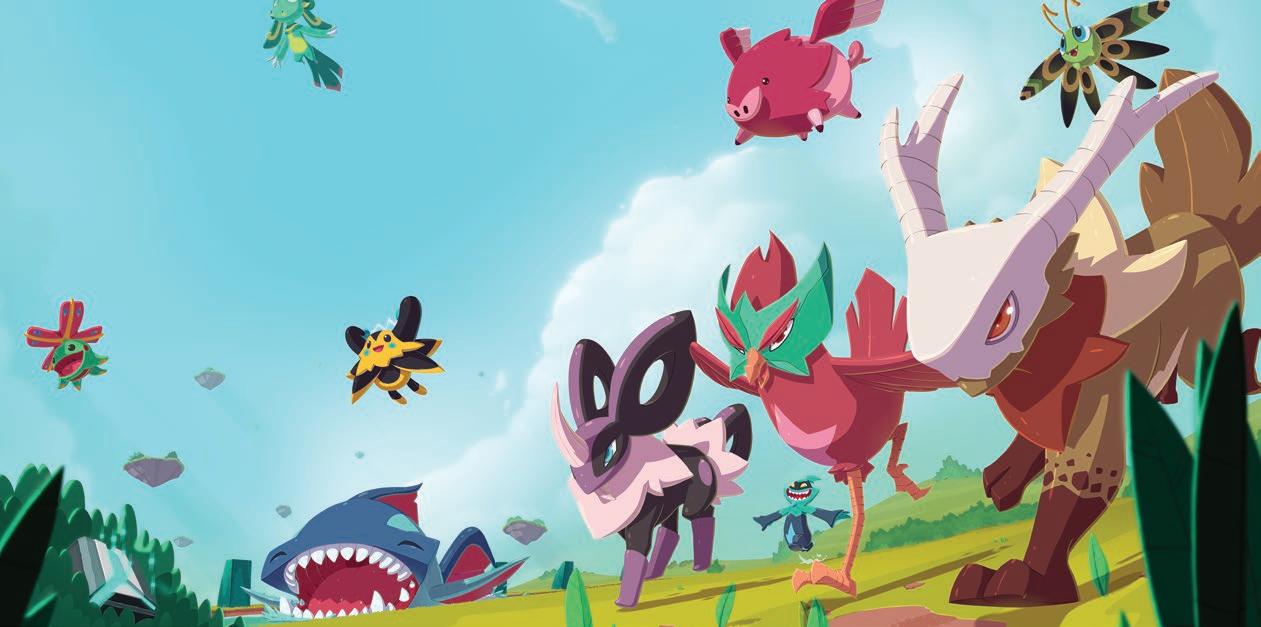
Bardill, on the other hand, doesn’t see the fantasy genre losing steam any time
soon when it comes to spawning on-screen entertainment for kids and families. “Fantasy goes hand in hand with fandom, and helps to create these massive lifelong relationships fans have with brands,” she says. “The Harry Potter effect has created several generations of people who love getting totally immersed in complex and layered storylines, which also translates to fantasy games. So it makes sense that you can create these expansive, multifaceted series adaptations that have the potential to go in so many different directions.”
Fantasy or not, Baronnet sees a bright future ahead for video game adaptations. “The video game world is so diverse, and I think it’s possibly more creative than the movie and TV business,” he says. “It’s amazing to see how many new concepts and worlds get created.”
So what about the curse? Is it actually over? If new video game adaptations for kids and families are going to have a better shot at commercial and critical success, film and TV producers and video game companies need to execute better creative collaborations, says Baronnet.
“Streamers need to better understand video game companies, and vice versa, to ensure that the adaptations will be true to the DNA of the games. Then there is the power of negotiation to keep creative control of the game IP. And keeping creative control doesn’t mean the video game company has full control—it means it is mutual creative control.”
Lesser-known games like Crema’s Temtem (pictured) and Drinkbox’s Guacamelee! have a ton of adaptation potential, according to Marla Studios’ Jean Julien Baronnethen it comes to tackling a gamebased IP, kids producers have their work cut out to ensure a successful translation—whether it be a legacy game with decades of history, or a burgeoning property that has yet to expand beyond the console.
The craft of adapting video games for other media involves bringing depth to character arcs, folding in callbacks for longtime fans, making storylines accessible to first-timers, and determining the right kind of visuals. Execs agree that the key is to strike a delicate balance between old and new, and they have some ideas on how to achieve that.
A search for the next generation’s Pokémon led Paris-based Somewhere Animation to co-produce its upcoming Temtem series (26 x 22 minutes), aimed at kids ages six and up. Based on the samename game from Spanish developer Crema, it explores a colorful world where the titular creatures engage in battle.
There’s no better time than now to adapt kids video games, says Somewhere’s founder Arthur Colignon, who credits the success of game adaptations in recent years to today’s youth. “I think the new generation really looks for a 360-degree universe. When they love an IP, they want to continue the ride across all formats.”
Ultimately, the challenge for these adaptations is staying faithful to the source
material’s roots without simply mimicking the game. “To make a good adaptation, you have to betray [the source]...but with intelligence,” he says, echoing advice he received from a French author. “If you simply copy and paste, you lose out on everything ‘new’ that the audiovisual format could bring.”
One way to call back to a game without simply mimicking it is through music. Colignon says there are two recognizable songs from Temtem that he hopes to include in the series—and early discussions are underway with the musician who worked on the game.
Paris-based TeamTO is experienced in the video game adaptation space—the studio has animated a slew of popular series for third parties, such as Skylanders Academy and Rabbids Invasion. Detailed early discussions with IP owners and producers are essential for mapping out how a project can “[stay] true to the game design and fans’ expectations, while also making the characters more complex,” says president and CEO Guillaume Hellouin. While it’s always a gamble to expand a yet-to-be-released game, companies like Toikido are seeing some creative upsides to the approach. The British toymaker chose to debut its original property Piñata Smashlings as a Roblox game in July 2023, while prepping an animated series that’s due out next year. Like Temtem, the IP centers around a world
of colorful creatures (known as Smashlings). US metaverse company Supersocial developed the game, and Nelvana is handling the series, but Toikido maintains responsibility for all creative and character writing, says marketing head Andrew Matjaszek. This ensures cohesiveness during the crucial franchise-building phase.

Despite the game and series not releasing simultaneously, their development overlapped, which helped the company plan ahead for attracting fandoms. “We can create cross-promotional strategies, such as teasing the series in the game to build excitement,” he notes.
The overlap also allowed creators to fine-tune how certain game elements would translate into a linear narrative, and vice versa. In the game, players complete quests and collect “gems,” which can be used to speed up their progress or “tame” a Smashling. The team decided to include these gems in the series as well, but tweaked them into a form of currency the characters use to buy things from the Piñata Village, says Matjaszek.
But what about creating a new series for a well-established video game IP? This was the challenge for Canada’s WildBrain Studios when it signed on as a co-producer for Netflix toon Sonic Prime. The Sonic IP’s 30-year existence in the market means it has already been a part of several cross-platform
adaptations—making novelty all the more important in any new iteration.
“[It’s why] we wanted to work closely with SEGA to bring audiences something that felt authentic, but also new in the Sonic canon,” says executive producer Logan McPherson, who is also WildBrain’s SVP of creative and animated production.

Brainstorming led to an idea called the “Shatterverse”—an important part of the series that sees Sonic’s world get shattered into multiple realities, where he meets alternate versions of his friends and even himself. With that trope in place, McPherson says the writing for the series also had to align with modern Sonic’s existing mythology.
“We couldn’t mess with the game timelines, the Green Hill location or any well-established Sonic lore,” he notes. “This was where the Shatterverse really came in handy, since it was our playground to invent new characters and storylines and really drive the series arc, while also having some fun with the game legacy.”
The Shatterverse also served to give the iconic hedgehog a new mission (restoring his original world) that appealed to nostalgic fans, while creating an emotional arc (learning who he and his friends are) that relayed everything new fans would need to know.
This narrative resonated with audiences and landed both seasons of the series
among Netflix’s top 10 most-watched Englishlanguage shows during the title’s release week. And in July, season two racked up almost eight million viewing hours on the platform, with a single ep quickly generating nearly five million views on the Netflix After School YouTube channel (four million subscribers).
Reflecting on the growing success of game-to-screen adaptations, execs can’t help but observe that the lines between the two have increasingly blurred. While video games have advanced to look more visually cinematic than ever before, streamers like Netflix are leading the “gamification” of TV with interactive shows. “Animators these days grew up with visual codes from the gaming world, so they are very at ease in this crossover area of the industry,” notes TeamTO’s Hellouin.
And speaking of animation, Somewhere’s Colignon highlights the advantage of adapting games using real-time rendering technology. This can result in a more efficient workflow, because the assets created for the game with real-time tools can also be used for an animated TV show or film adaptation.
In fact, such assets could carry over into a variety of other formats, such as social media content or theme park backdrops—which perfectly serves Colignon’s 360-degree franchise model. He says the plan is to collaborate closely with Crema whenever they
work together on a sequel, in order to plan ahead for shared assets.
But real-time is not the only option, notes TeamTO’s Hellouin. For RAID: Call of the Arbiter, released in May, “we used Pixar’s RenderMan because the sophistication and quality of lighting in [the RAID: Shadow Legends game] could not have been achieved with a real-time render,” he says. Similarly, Sonic Prime leveraged a “feature-style animation pipeline with Katana/Arnold as our lighting and rendering package to really push the storytelling visually,” says McPherson.
With so many options available, the art of adaptation is no doubt overwhelming. But there’s one simple way to ease the process: having actual gamers working behind the scenes. Hands-on experience is prioritized in the recruitment process at TeamTO, according to Hellouin. “Most artists working on the [adaptation] are already familiar with the game, which is why we selected them.”
Another way to become as familiar with a game as a fan is a handy little tool known as the internet. Colignon says producers can log on to vocal online communities like Reddit to stay in the loop about fan expectations for a series or movie. “We’re on Discord to connect with the fanbase, and we also frequently talk to the head of Temtem France, a leading fansite for the IP,” he adds. “This way, you’re really connected with your future audience.”

ideo games have slowly but surely made their way into the mainstream. And along the way, the medium has built up a multi-generational audience of players who are hungry to buy all manner of licensed goods related to their favorite titles.
According to a report published in August by New York-based Licensing International, video games, apps and software generated more than US$31.5 billion last year from licensed merchandise and services. The segment now accounts for 10% of the total licensing market, competing directly with fashion accessories (10%), toys (12%) and apparel (14%).
“The video game segment is no longer a narrow silo; retailers are starting to evaluate it as an equal part of the whole entertainment industry,” says PhatMojo president Bill Graham. “What we’re doing on the retail front is showing the scalability of these gaming brands as franchises.”
In the last three years, the LA-based company has signed a series of master toy deals with independent game developers including MiniToon (Piggy), BIG Games (Pet Simulator X), Roy & Charcle (Rainbow Friends) and EnchantedMob (Poppy Playtime). Graham notes that most of the titles it picks up for licensing deals are horror-themed, and they generate billions of plays from kids on gaming platforms like Roblox and Steam.
Graham identifies horror games as particularly strong fodder for storytelling. “In the toy world, that translates to many endearing and disarmingly cute character sets that players feel attached to.”
PhatMojo leverages these characters into a wide range of playthings, including action figures, playsets, surprise eggs and plush. Traditional toy categories like these ones work best for gaming IPs because they satisfy the basic need that players have to hold and touch a physical piece of the games they enjoy, says Graham.
And unlike other brands that are struggling to make headway at retailers, gaming products are some of the hottest SKUs in the toy aisle right now, he adds. This is thanks to the substantial player bases on record for each game, which gives retailers confidence that product won’t be left sitting on shelves.
This sentiment is shared by Toikido in London, which was already setting up licensing deals in all product categories for its Piñata Smashlings IP before the Roblox game had even launched. The property is inspired by the popular paper-maché party game and revolves around players hatching, collecting and battling with hundreds of piñata-styled characters.
“We began generating interest for [Piñata Smashlings] by showing retailers and our brand partners very early data from the user
testing of the game,” says Toikido founder and CEO Darran Garnham. “We wanted to be as open as possible with them to build up their confidence in the brand.”
The game’s initial consumer products partners include PMI Kids’ World (collectibles and plush), Topps (trading cards), Redan Publishing (magazines), Centric Brands (sleepwear and beauty), Isaac Morris (apparel and swimwear), Inkology (stationery) and Jay Franco & Sons (bedding and housewares). Products will begin rolling out to retailers worldwide in September, with more drops planned into next year.
Just one month after launching in July, the Piñata Smashlings Roblox adventure game had generated more than a million plays, with kids spending an average of 17 minutes online during each session. And to supplement the gameplay, each physical product will come packaged with a download code that unlocks exclusive items for the purchaser’s Roblox avatar.
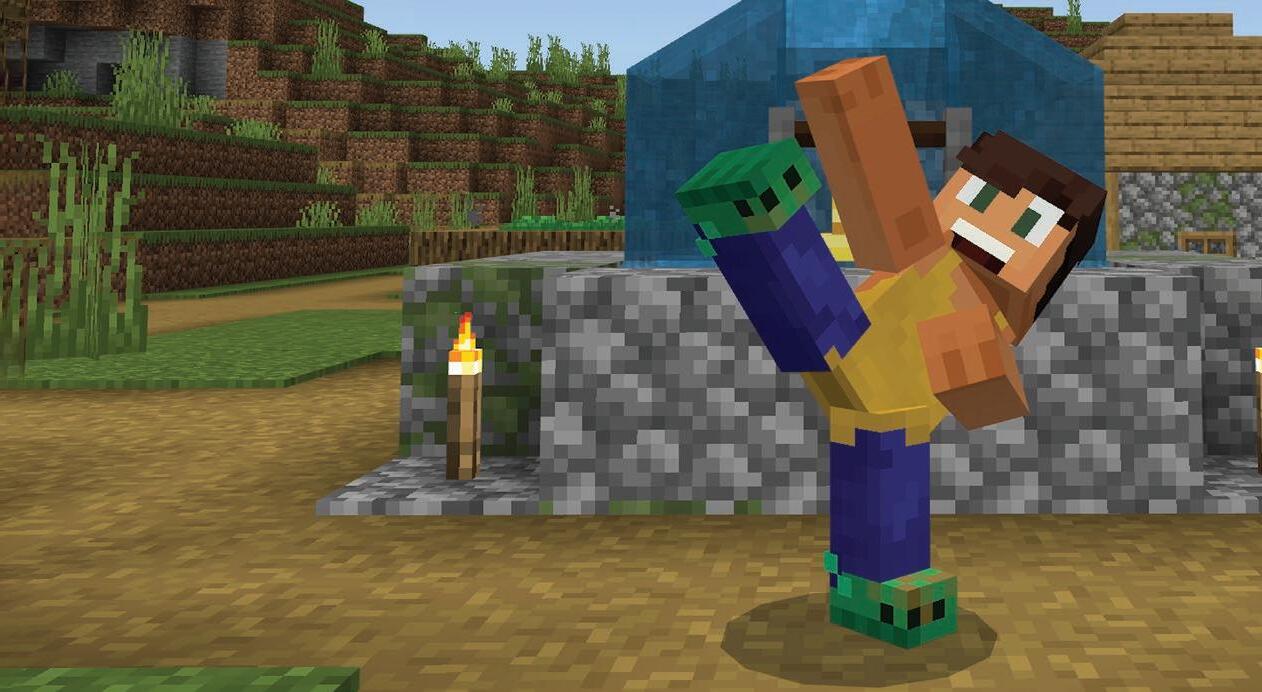
Meanwhile, Toikido’s game developer partner Supersocial will continue to add new features, characters and worlds into future updates of Piñata Smashlings, to give fans more reasons to play again and again.
“Respecting and listening to the game’s community has to be one of the core elements of the experience,” explains Garnham. “We’ve made sure to build a community
Video game franchises are thriving in the consumer products space, with retailers eager to order ranges of licensed toys and merchandise to satisfy each title’s fandom.team that’s ready to listen, learn and react to whatever the players need. It’s one of the big things we learned while working on previous game licenses like Among Us and Gang Beasts.”
Outside of the ongoing Roblox frenzy is Microsoft, which acquired Swedish game developer Mojang Studios and its flagship building and survival game Minecraft in 2014 for US$2.5 billion. Since Minecraft launched in 2011, gamers have purchased more than 238 million copies worldwide across 20 gaming platforms. The install base is up to 141 million monthly active users, and Microsoft is slowly making moves to convert them all into recurring buyers of consumer products.
“For years, we’ve been focused on building [Minecraft’s] core lines, including toys, apparel and publishing. But now we’re expanding to new categories and experimenting with different types of partnerships,” says Federico San Martin, Microsoft’s director of Minecraft consumer products.
The developer is hard at work on Minecraft’s 15th anniversary licensing program for next year, which will see the franchise expand into categories like food & beverage, consumer electronics and health & beauty for the first time. (To date, Microsoft has signed deals with more than 150 licensing partners worldwide for the gaming phenom.)
In the meantime, the company is focused on growing the game’s retail presence in international territories including Australia, New Zealand and Europe. San Martin also has his sights set on Asia as the next frontier for Minecraft consumer products.
“Whenever we expand to a new territory or market, it’s very important that we deliver products that relate or are authentic to that country,” he says. “That means not just distributing products from our global partners, but also searching out new licensing opportunities at the local level as well.”
Ivo Gerscovich, SEGA of America’s chief business and brand officer for Sonic the Hedgehog, adds that part of the essential formula for adapting games into consumer products is finding play patterns and product categories that align with the brand’s DNA. In the case of SEGA, that means locking in footwear deals with manufacturers
Uncanny Brands designed its Sonic mini-waffle maker as an exclusive prize at Dave & Buster’s arcades, then created a new edition for mass-market consumers hungry for a speedy breakfast.

Charming flair
As part of SEGA’s partnership with Crocs, the footwear manufacturer rolled out a five-pack of Jibbitz charms for kids to add some Sonic style to their favorite shoes.

Gaming accessories company EXG Pro found a way to keep Sonic still. Now the iconic blue blur can conveniently hold a charging phone or controller.

Strike a pose
Japanese toyco S-FIRE worked with the Sonic team to create an exact replica of the art from the iconic Sonic Adventure 2 video game box as a detailed statue for collectors.

like PUMA and Crocs to recreate Sonic’s iconic shoes in several different styles.
“With a franchise like Sonic, which has been around for over 30 years, one of our challenges has been ensuring that we’re keeping things fresh and fun while remaining authentic to the brand’s core values,” says Gerscovich. To overcome this, SEGA is balancing its product mix to include items that evoke nostalgia in the brand’s multi-generational audience and allow fans to incorporate the blue hedgehog into their everyday lives.
One such example is the Sonic-branded waffle maker from Pennsylvania-based Uncanny Brands. Originally offered in April as an exclusive prize at Dave & Buster’s arcades in exchange for thousands of tickets, the item quickly built up demand among the franchise’s fandom, says Gerscovich. Seeing a new market for Sonic home appliances, SEGA quickly designed a new version of the waffle maker with Uncanny Brands that hit retail in June.
Gerscovich predicts that similar pop culture-themed partnerships will begin to trend with kids and families as more beloved gaming franchises are adapted for mainstream entertainment and licensed into products that make their way into retail aisles and online stores.

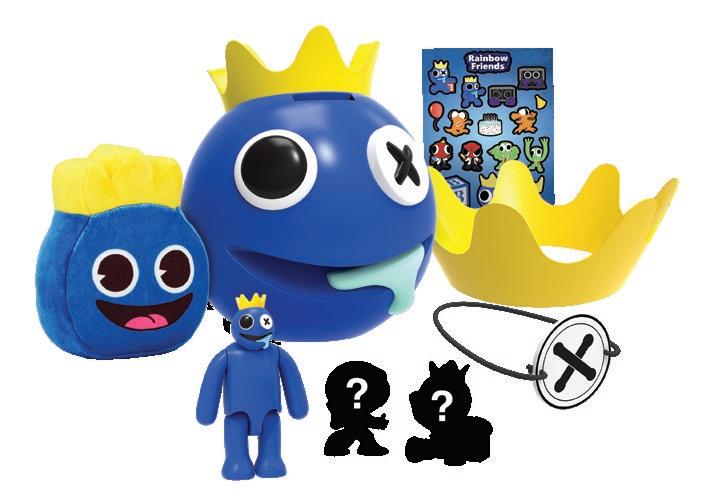
The video game segment is no longer a narrow silo; retailers are starting to evaluate it as an equal part of the whole entertainment industry.
—Bill Graham, PhatMojoMicrosoft linked up with French apparel retailer Lacoste to create a spring and summer Minecraft capsule collection
Kids producers are leaning into enchantment at MIP Junior and MIPCOM in 2023. Here’s a look at some of the mystery and magic behind several new series concepts traveling to Cannes this month.
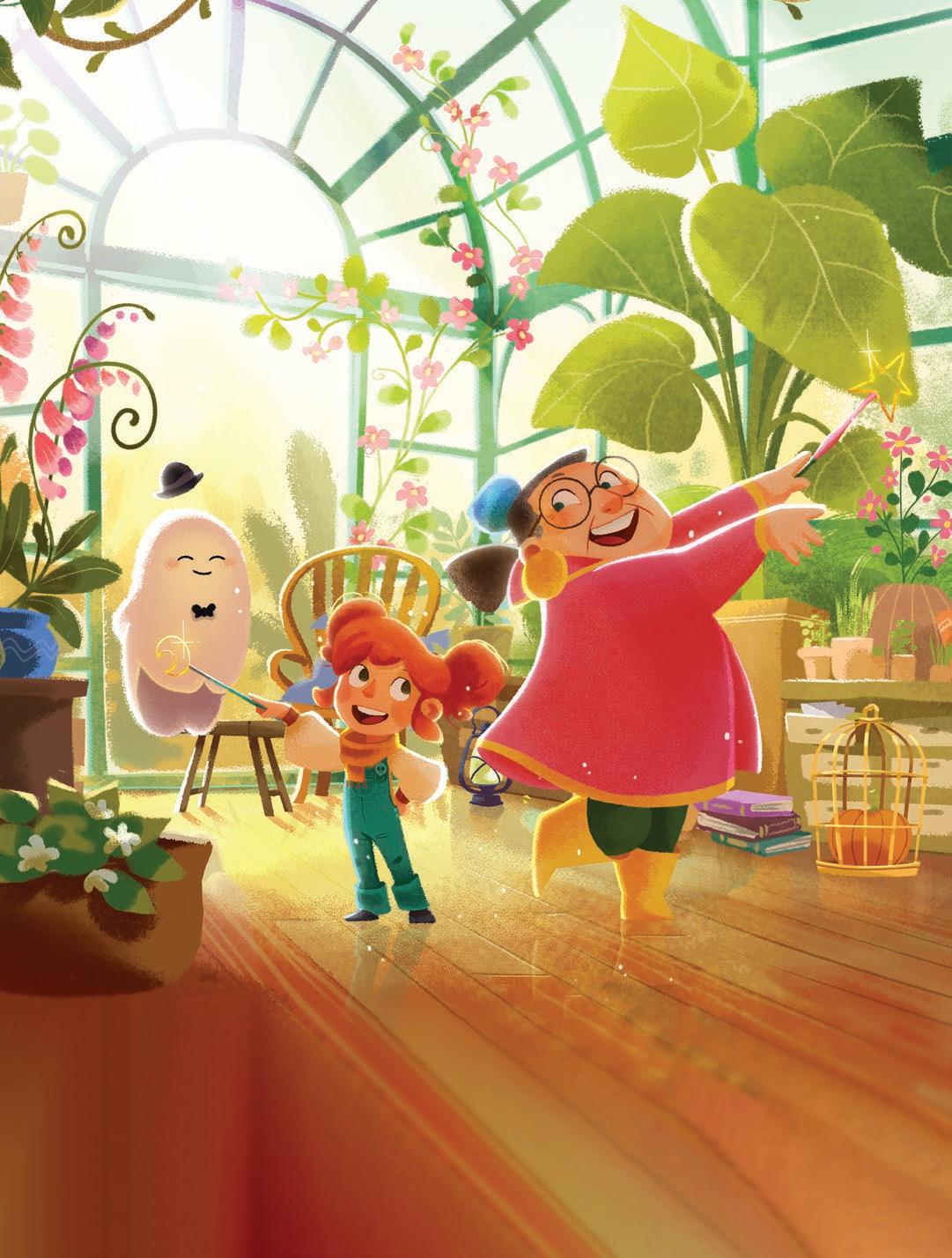
Co-producers: All In One Production (France), Syon Media (Canada) and White Boat Pictures (Belgium)
Style: 2D animation
Format: 26 x 11 minutes
Budget: US$3.8 million
Status: Three scripts, a bible and a two-minute teaser are ready. The team is on the hunt for broadcasters and financing.
Delivery: 2025
Eight-year-old Emilily has been intrigued all her life by urban legends about a witch living in an ominous hilltop house. Finally, she screws up her courage and enters the spooky house. Inside, she meets a wacky but friendly old witch named Eglantine, who agrees (after lots of convincing) to become her mentor in the art of witchcraft. Together, they meet a talking cat, a ghost butler and dancing plants—all while building a bridge across generations.
4 to 7Producer: Little Moon Animation (Ireland)
Style: CG animation with virtual puppetry
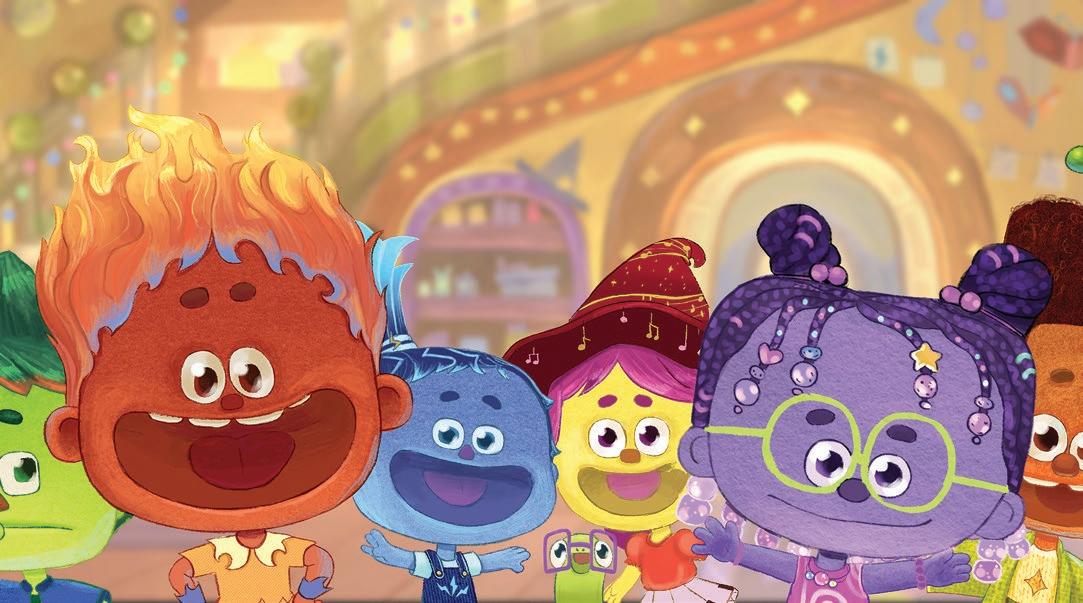
Format: 52 x five minutes
Budget: Roughly US$4 million
Status: A bible, sample script, animation test, episode outlines and teaser are ready. Needed next are broadcasters, co-pro partners and distributors.
Delivery: 18 months from greenlight
This series combines a strong dose of fantasy with the relatability of a daycare setting. Set in a school known as Enchantlings—run by a quirky owl caretaker named Madame Hoot—a magical ensemble of young witches and wizards get to learn about casting spells and mixing potions (along with more universal lessons about teamwork and friendship, of course). But the students occasionally lose control of their powers, leading to comical situations like furniture coming to life, enchanted hiccups and a pet turtle who levels up to lightning speed.
Producers: INANIMATTI (US & Italy), Rollman Entertainment (US)
Style: CG animation

Format: 13 x 30 minutes
Budget: US$8 million
Status: A bible, script and trailer are ready.
Delivery: 2025
This story takes place in a world inhabited by inanimate objects that have come to life in a quest to fulfill an existential purpose in their community. The series stars a Roman triumphal arch named Arky, who embarks on a dangerous journey to discover his true purpose and save the world from eternal chaos, with a little help from his best friends: a funny eggbeater and an intellectual metal tower.
The industry’s first market of the year will bring together the most important buyers and sellers of projects in development and catalogue programming as well as decision-makers from the entire media ecosystem spanning content development, licensing, and platform distribution.
















Speakers include:








Exhibitors include:

PROPEL YOUR BUSINESS FORWARD AND REGISTER NOW AT THE BEST RATE














Producer: The Jim Henson Company (US)
Style: Live action with puppetry

Format: 26 x 11 minutes
Budget: US$500,000 per half-hour ep
Status: The company is seeking key commissioning and co-pro partners.
Delivery: 2024/2025
In this series aimed at preschoolers learning to connect with the wonders of the outdoors, an adventurous hedgehog and a tree-loving piglet head out on some pretty epic walking journeys called “wowsabouts” (because they’re on the lookout for anything that will make them say “wow!”). The series channels kidfriendly humor, has the feel of a nature documentary, and even boasts some fashionable outfits (watch out for one character’s signature pink boots).
Co-producers: Cottonwood Media and Opéra National de Paris (France)
Style: CG animation
Format: 26 x 30 minutes
Budget: US$10 million to US$12 million
Status: A bible and script are ready.
Delivery: Q1 2025
This drama revolves around an 11-year-old girl living in the Caribbean whose life changes completely when she joins the prestigious Paris Opera Ballet School. Lonely and far from home, Maya faces many challenges in pursuit of her only dream, which is to become the school’s lead ballerina. Federation Kids and Family and ZDF Studios are on board as distributors.

6 to 11
Producer: Ex Nihilo Productions (Canada)
Style: 2D animation
Format: 10 x 20 minutes
Budget: US$2.1 million
6 and up
Status: A bible and two scripts are available, with a pilot episode in production for December.
Delivery: Q3 2025
The members of this ragtag detective club include a curious, puzzle-loving girl, her uncle, her loyal labradoodle, and the resident jock and gossip at her school. These amateur sleuths put their diverse skills into action as they investigate local crimes and all things eerie—that is, when they aren’t busy with homework and math tests!

Saint-Paul de Vence
This village on the French Riviera is extraordinary. Visit the peaceful Fondation Maeght Museum, where I have vivid childhood memories of the Giacometti sculptures in the garden. Enjoy a meal surrounded by masterpieces and the spirits of painters, writers and actors at the historic La Colombe d’Or hotel and restaurant. Stop for a drink in the village square under the shade of plane trees—the perfect spot to watch the Petanque players.
Le Cap d’Antibes
Le Sentier du Littoral is one of the best walking trails in the region. Discover the beauty of the Mediterranean by strolling along La Garoupe Beach from the Garoupe Lighthouse (now open to the public) to the Villa Eilenroc. Don’t miss the Picasso Museum, and be sure to stop for a treat at Jean-Paul Veziano’s bakery in Le Vieil-Antibes. You’ll also recognize the Safranier area featured in Joann Sfar’s animated movie The Little Vampire
Nice
Explore the charming streets and discover the flower and flea markets at Cours Saleya. You have to taste the local specialty, Socca, made with chickpea flour (at Chez Thérésa, for example)—it’s crispy and so good! I can also recommend la tourte aux blettes, le pan bagnat and les farcis. In the Arenas of Cimiez, perched at the top of the city and surrounded by olive trees, you can visit Le Musée Matisse (a museum devoted to French painter Henri Matisse).
Le Cannet
Wander the cobbled streets of Le Vieux-Cannet, just a few kilometers from Cannes. Then, visit the Pierre Bonnard Museum and enjoy a lovely dinner at one of the restaurants on the main street, such as Le Bistrot Saint-Sauveur.
Èze
At the highest point of this splendid medieval village, there’s an amazing exotic garden. Enjoy the stunning view from the top while having a drink or ice cream at the lounge bar of Les Terrasses d’Èze.
Le Cap Taillat
Le Cap Taillat is one of the jewels of the St. Tropez Peninsula. A magnificent hike on the coastal path of Ramatuelle takes you through pines, around small coves with views of turquoise water, to the end of Cap Taillat. Depart from the Escalet Beach car park—take a snack, wear trainers, and pack your swimsuit!
Saint-Jean-Cap-Ferrat
Discover the Ephrussi de Rothschild Villa and its picturesque gardens overlooking the bays of Villefranche and Beaulieu. Each garden has its own style, from Japanese to French, and Spanish to Provençal. Sit on the terrace for a light meal and take in the exquisite views.

Xilam Animation’s SVP of media distribution grew up between Cannes and Saint-Paul de Vence, so the region means a lot to her. She believes the qualities that make this area so unique are the special light, the endless shades of blue and the scents of nature.


